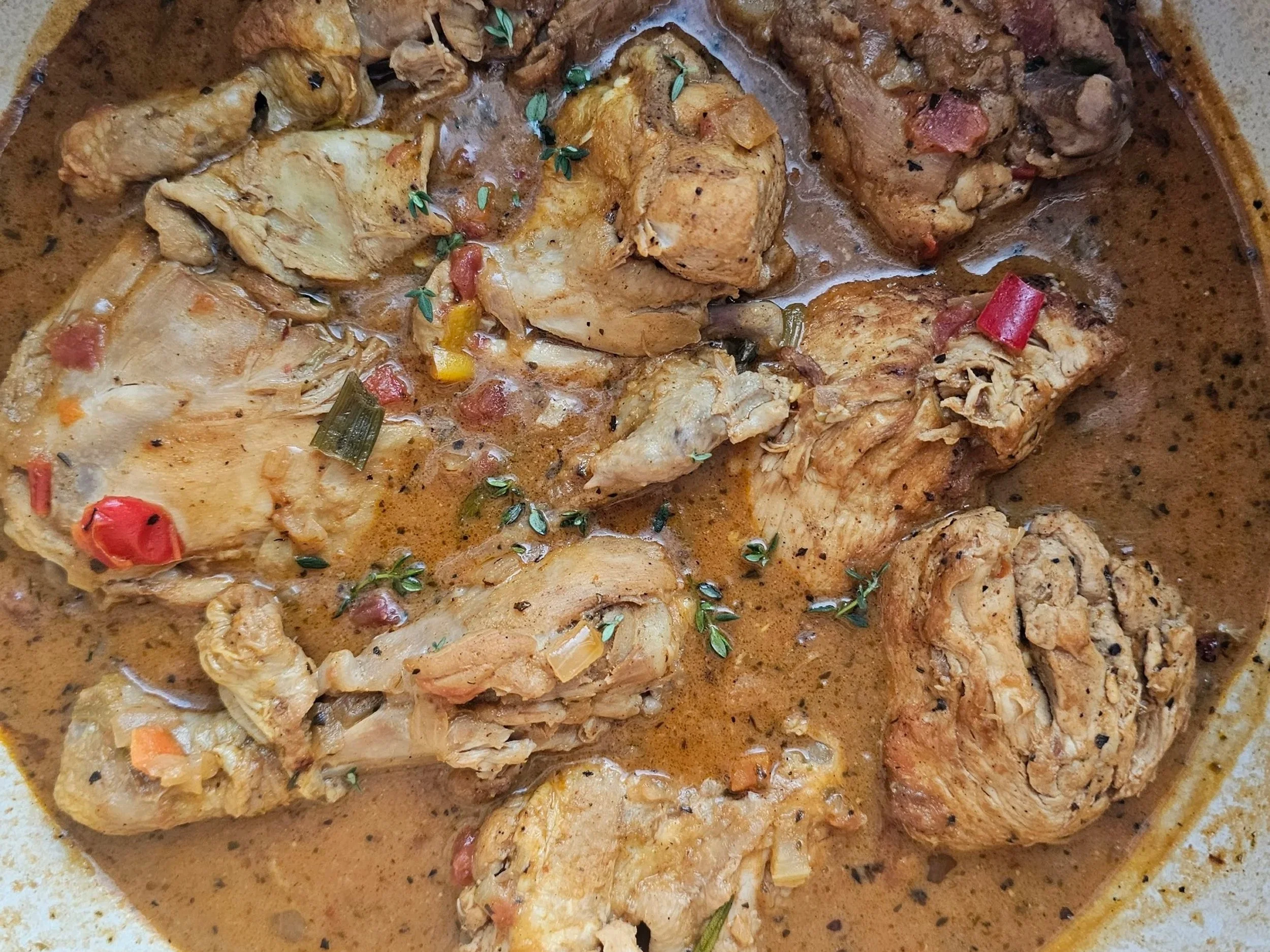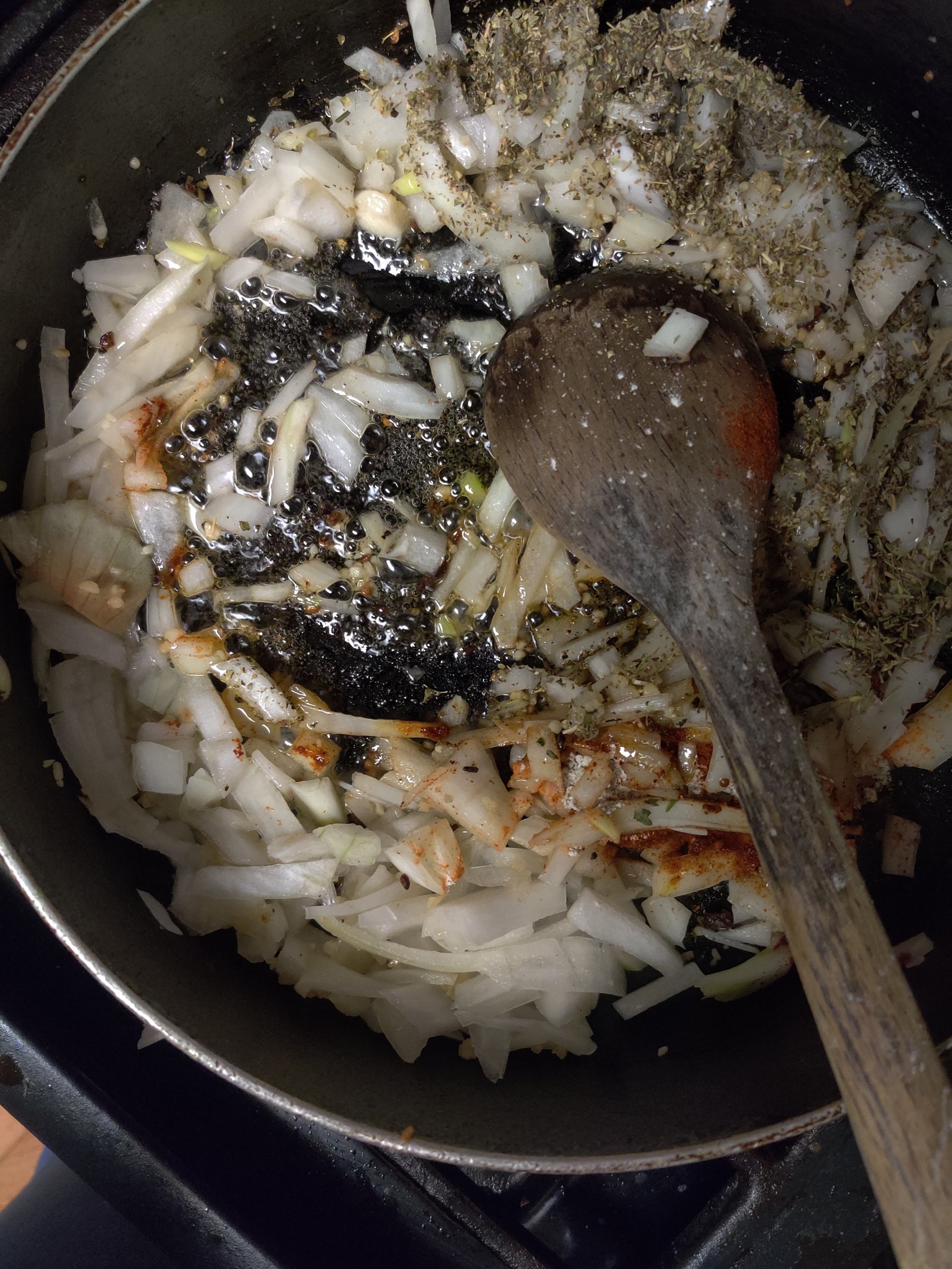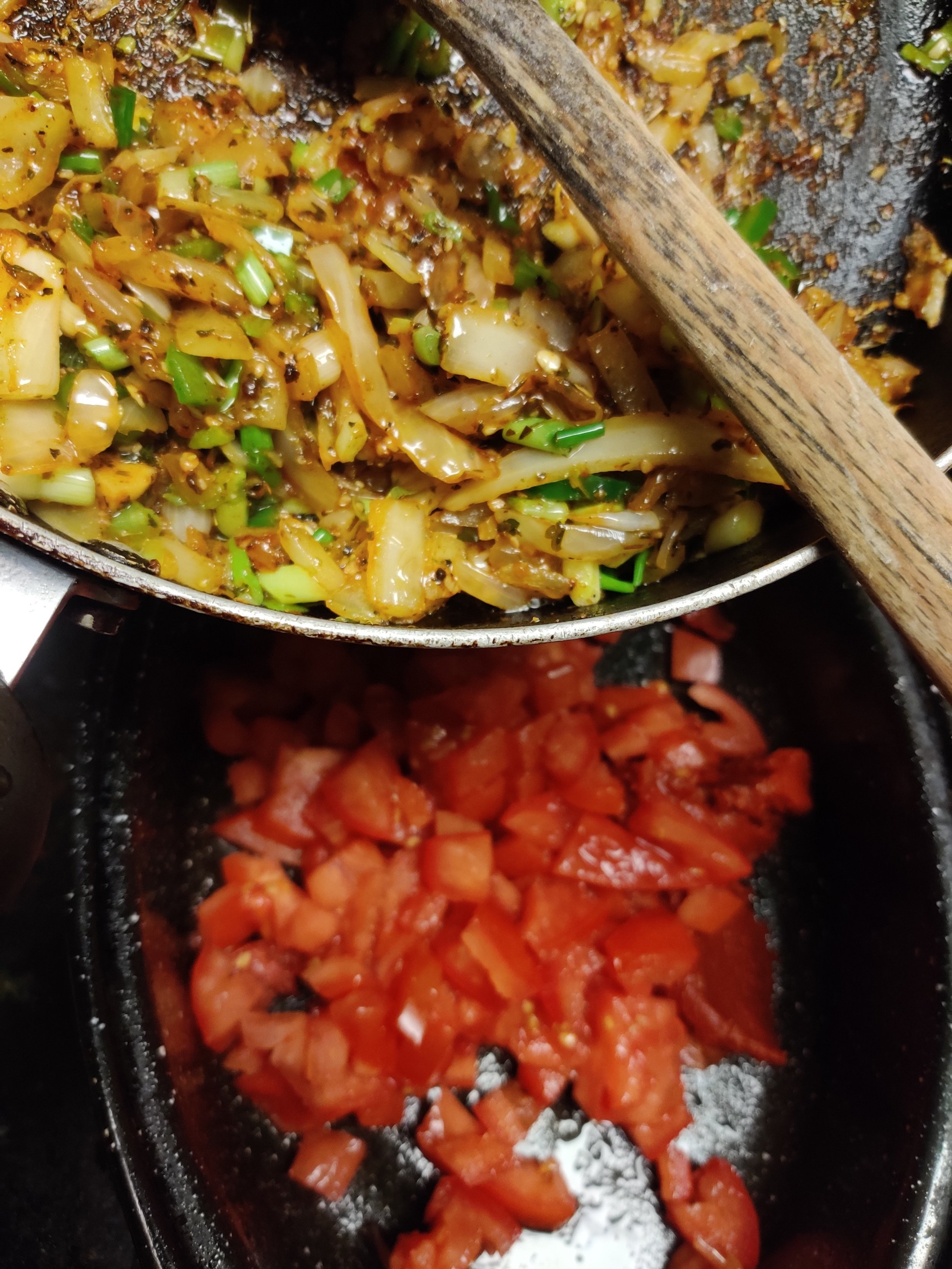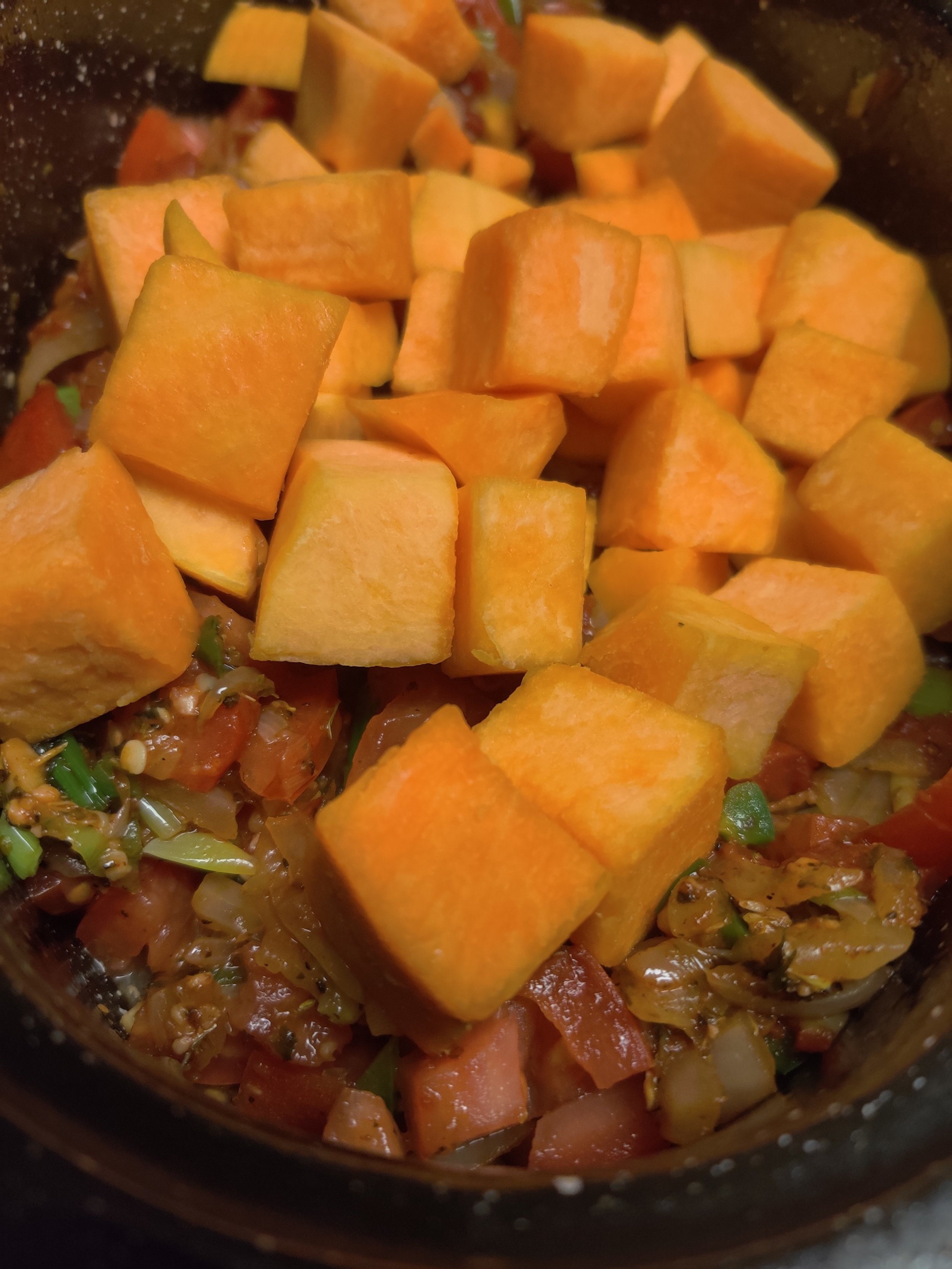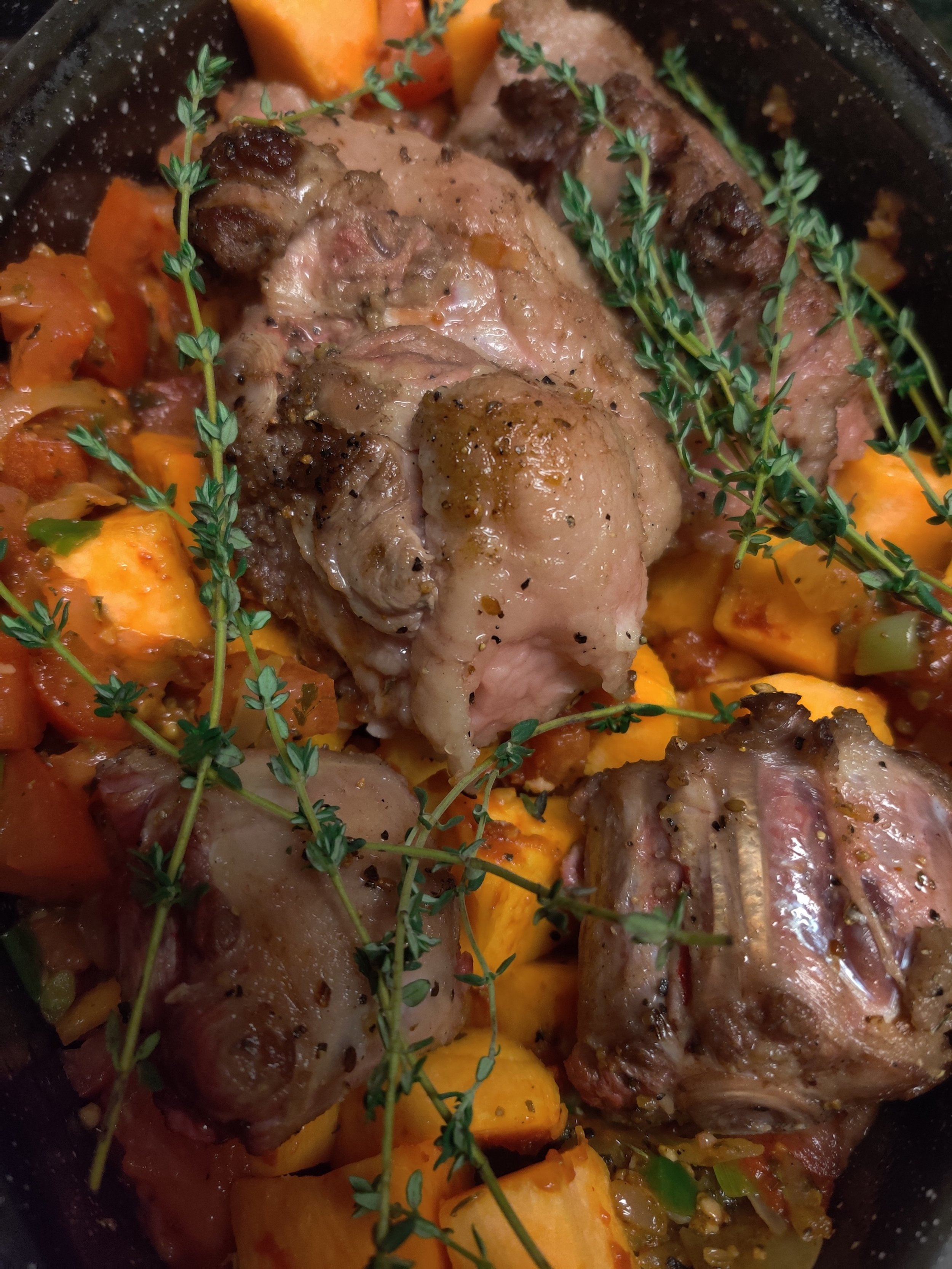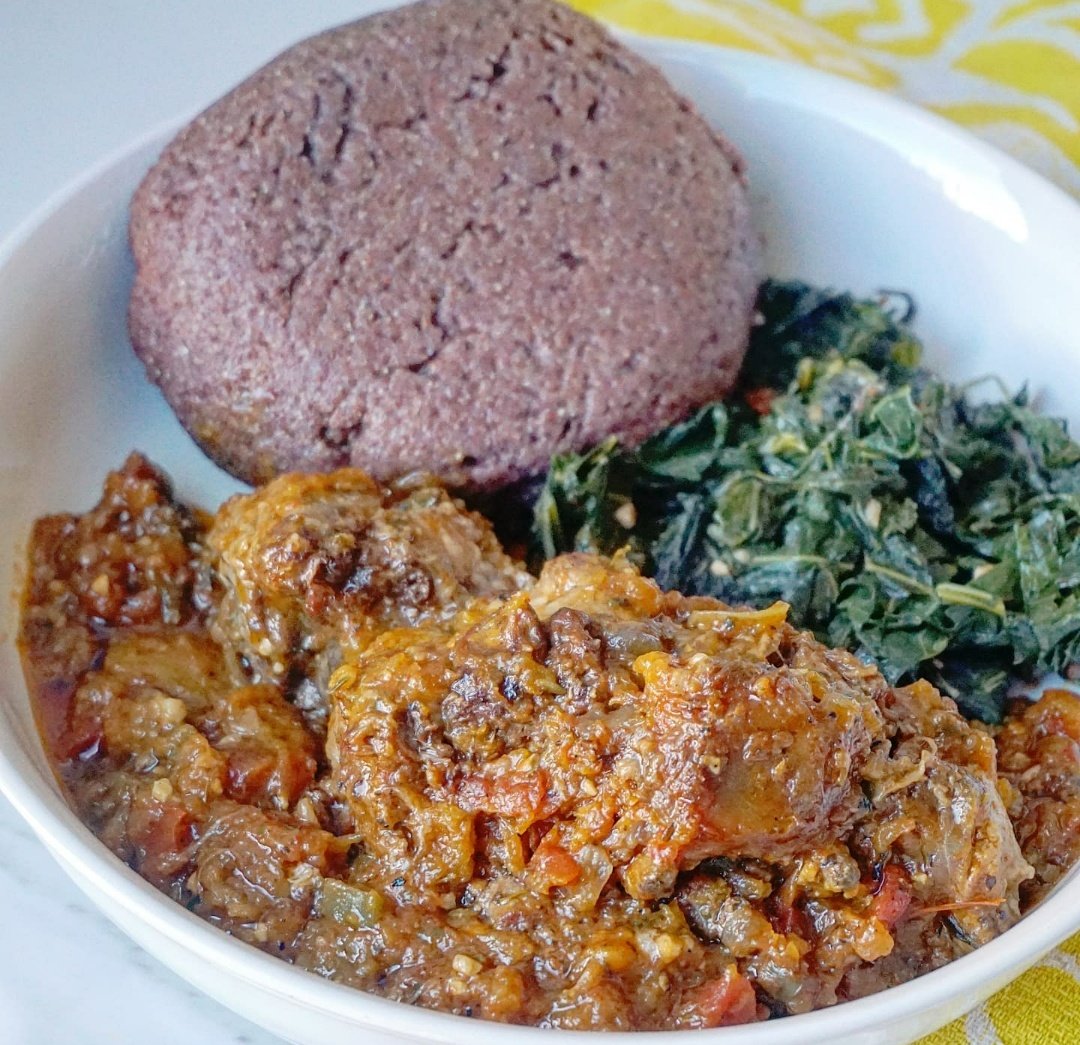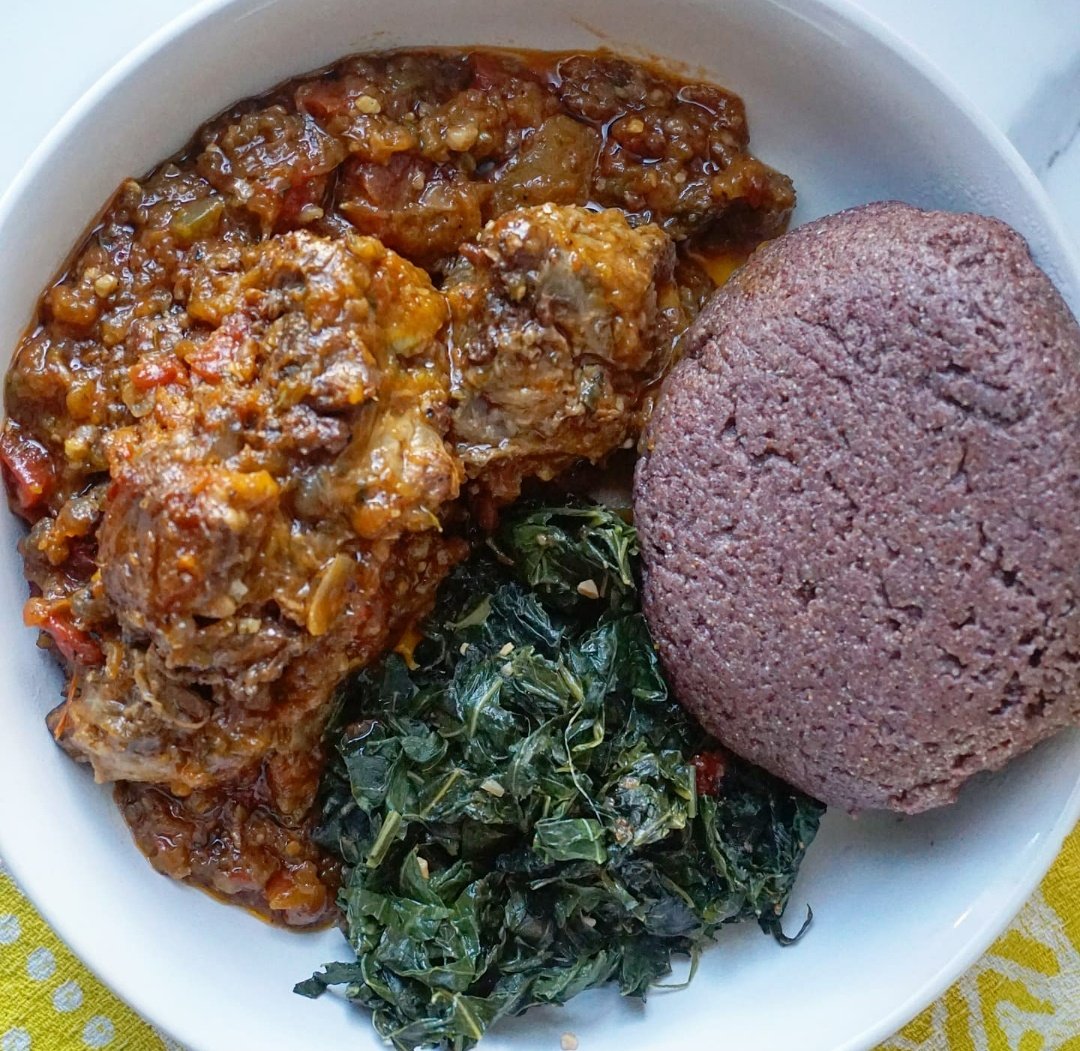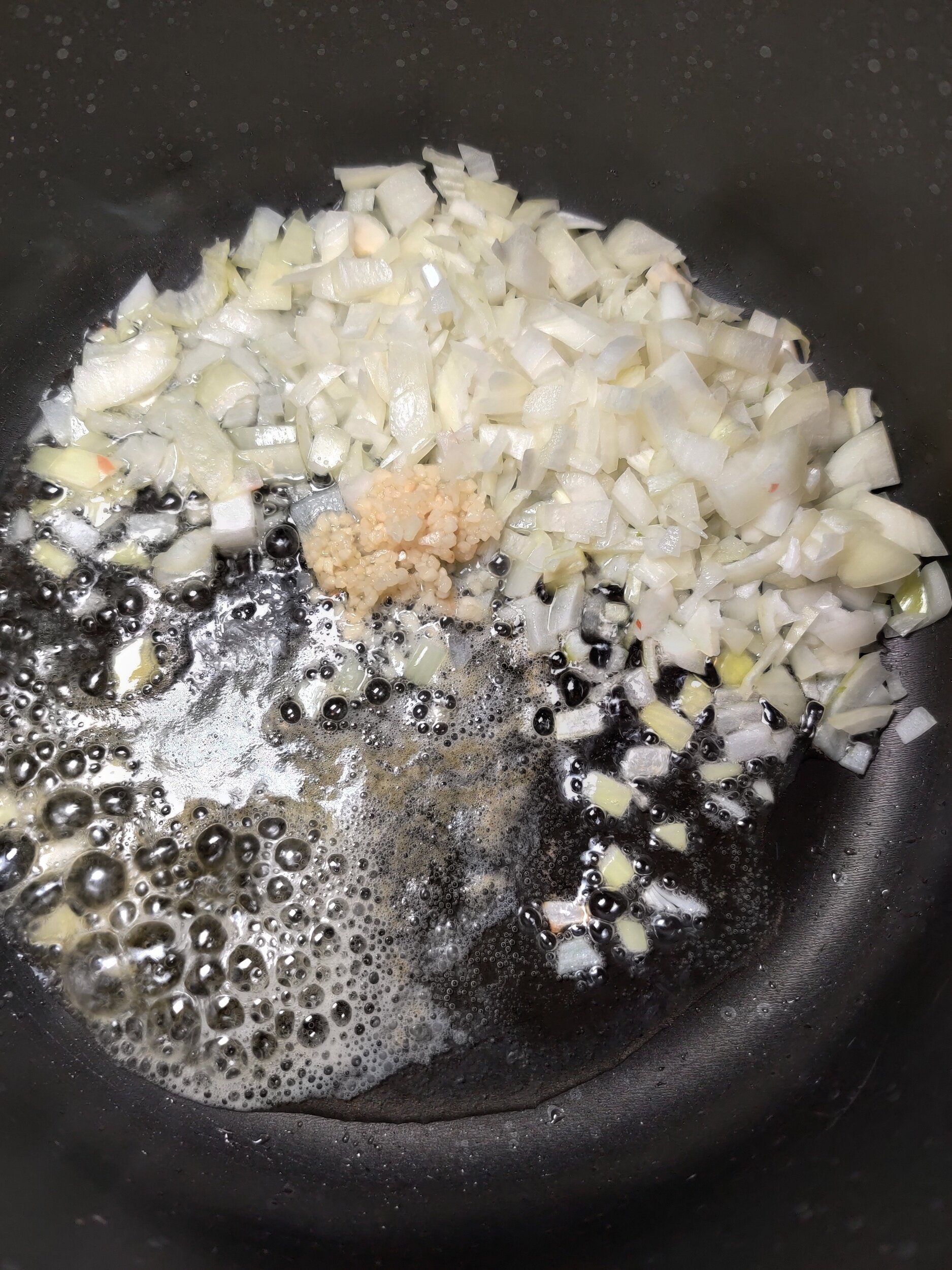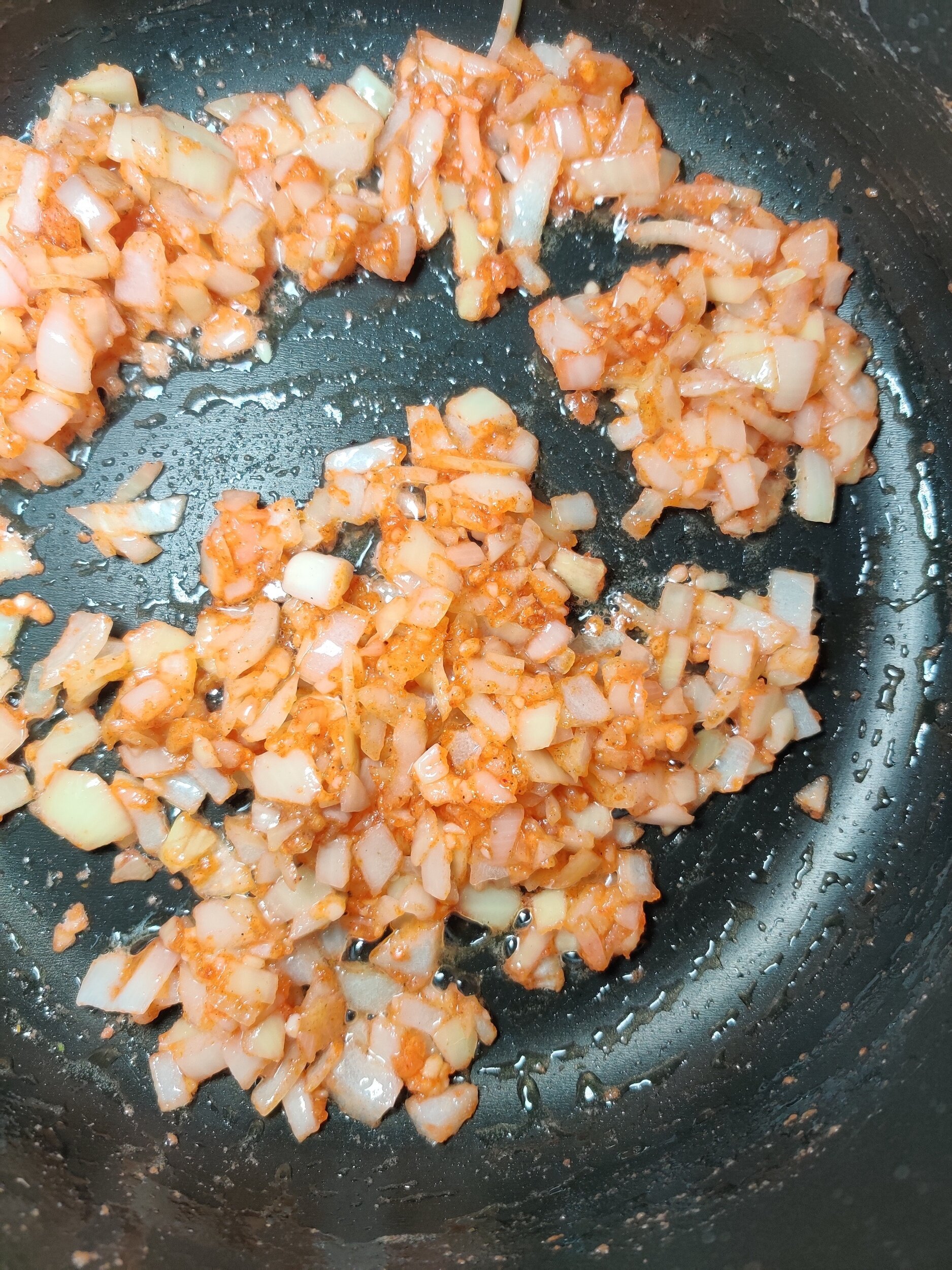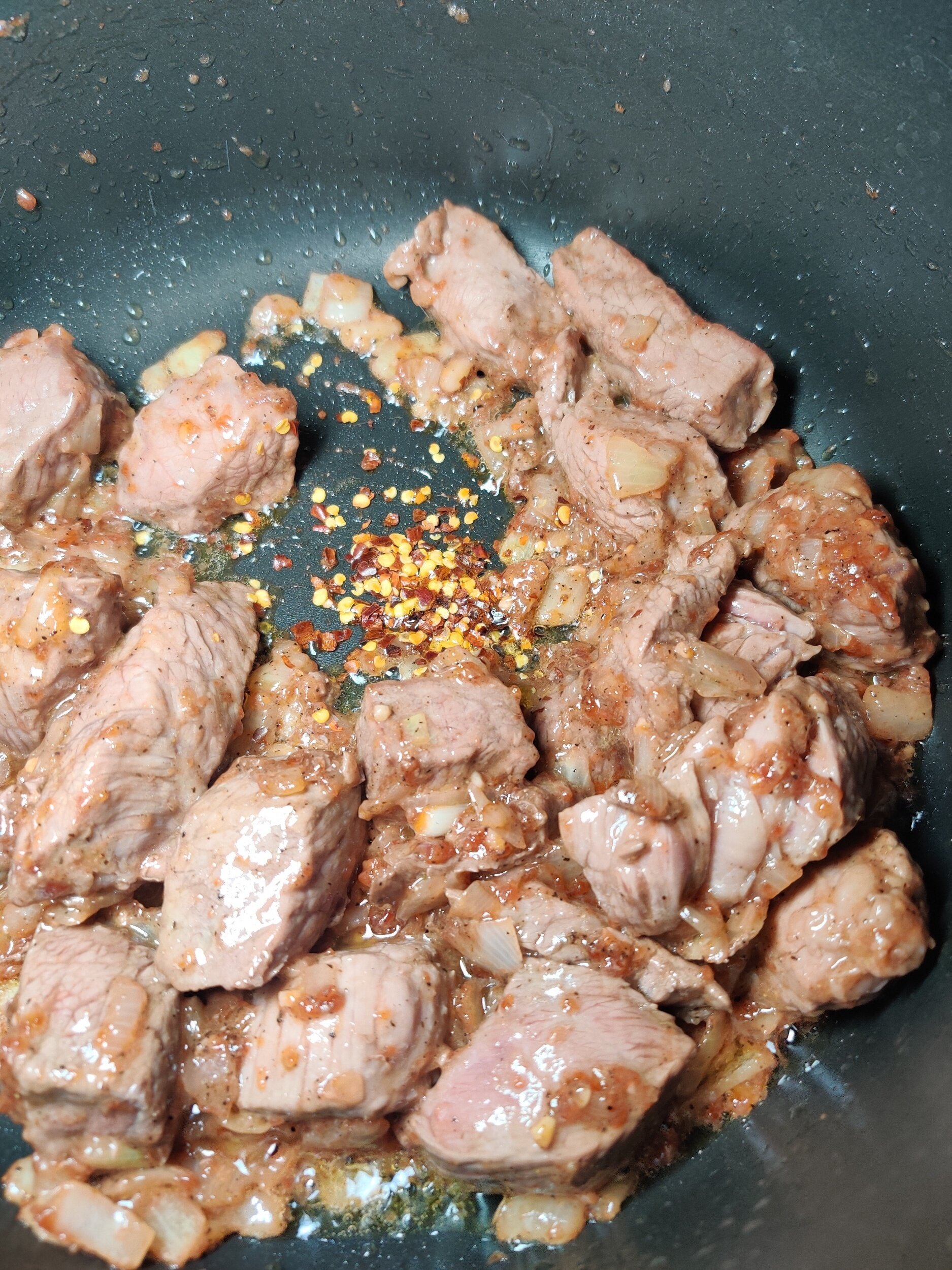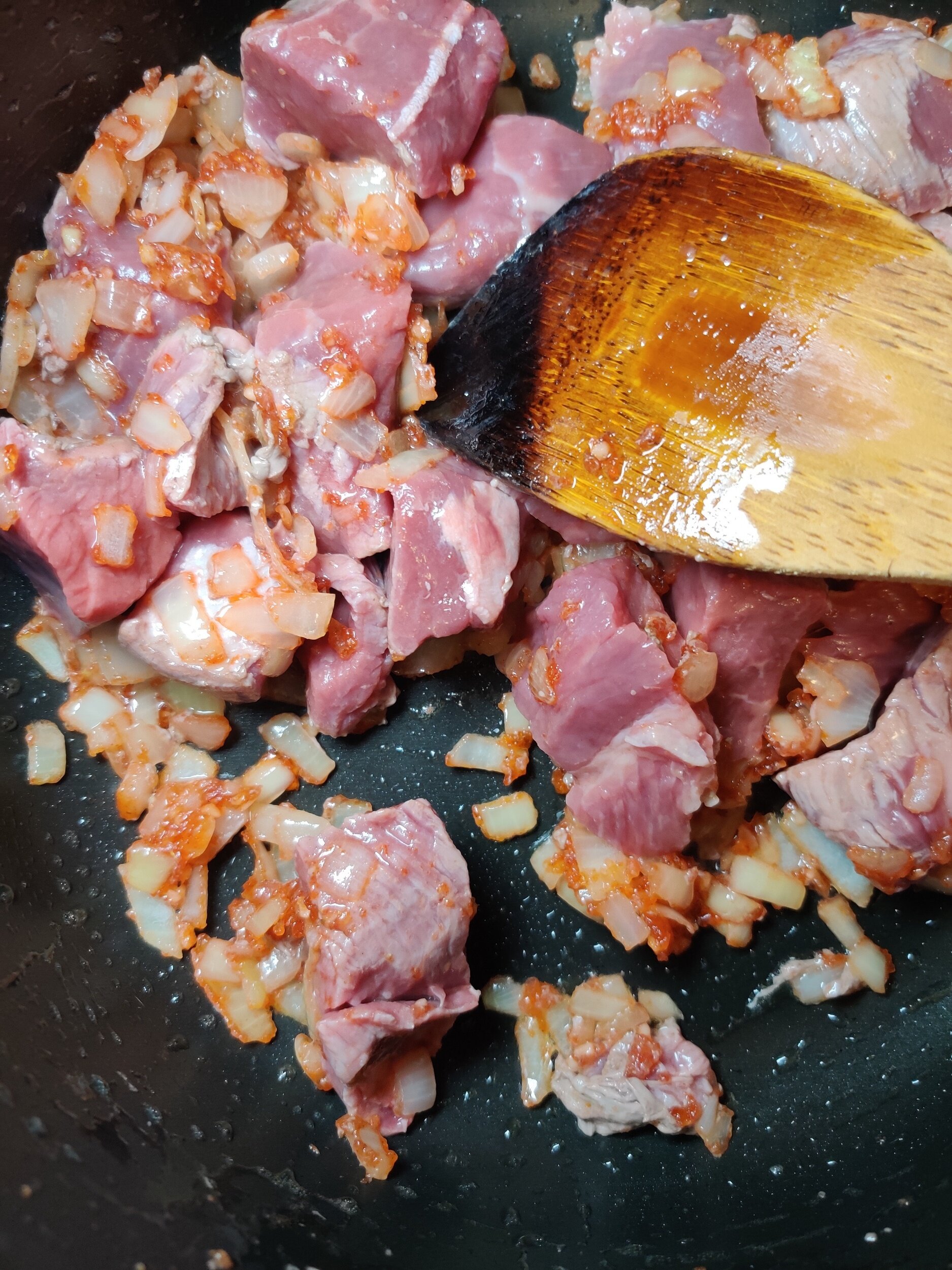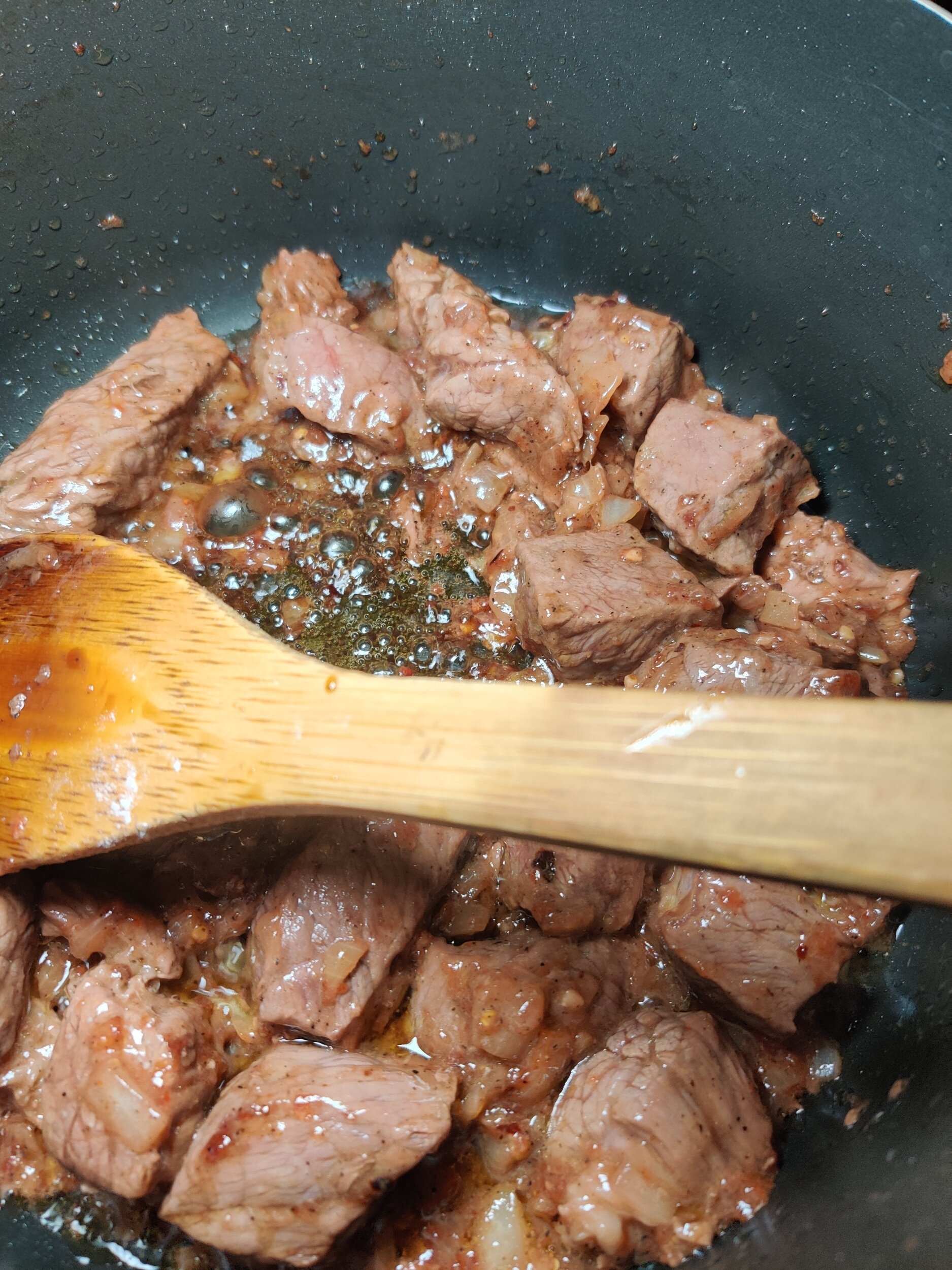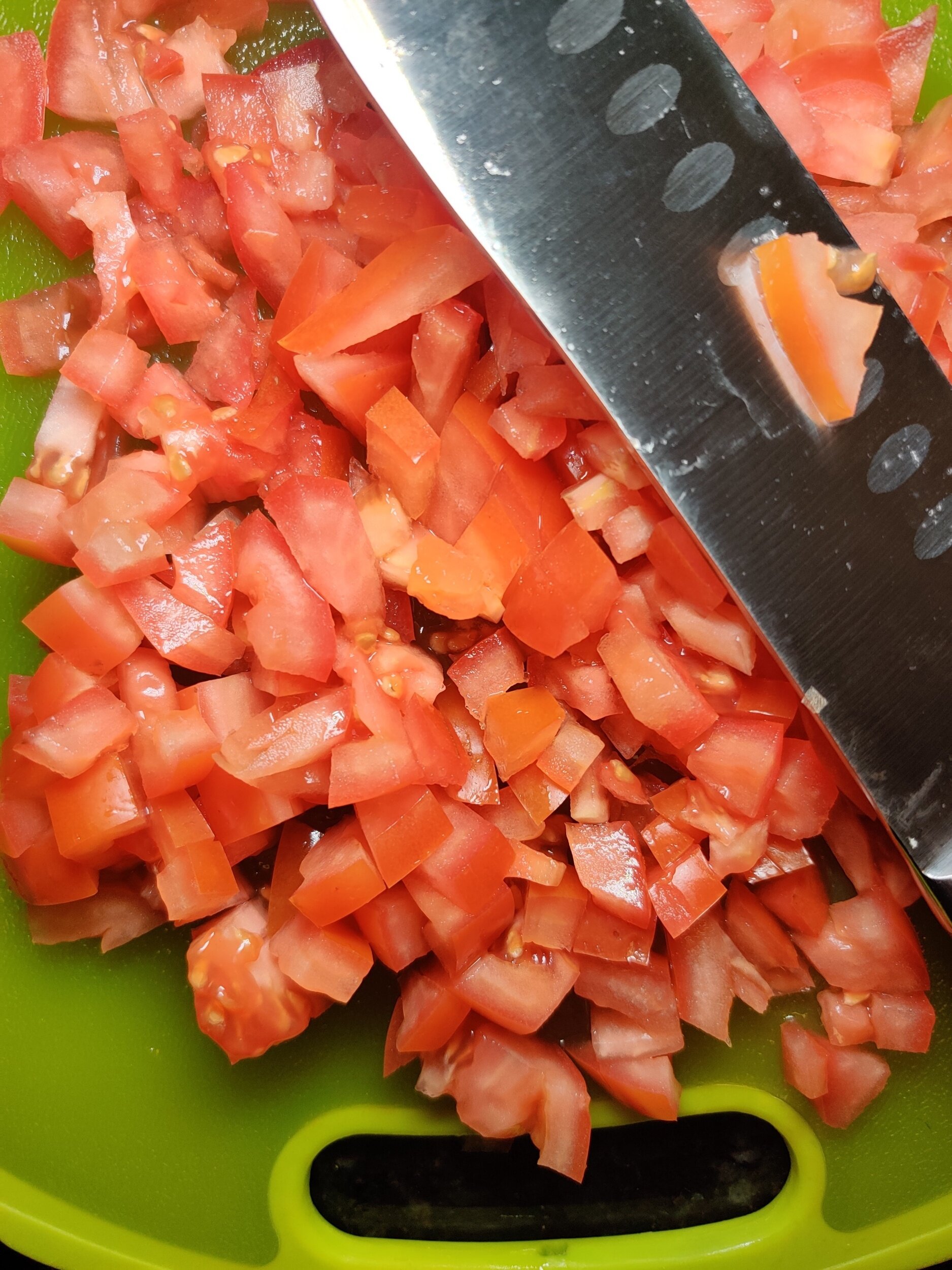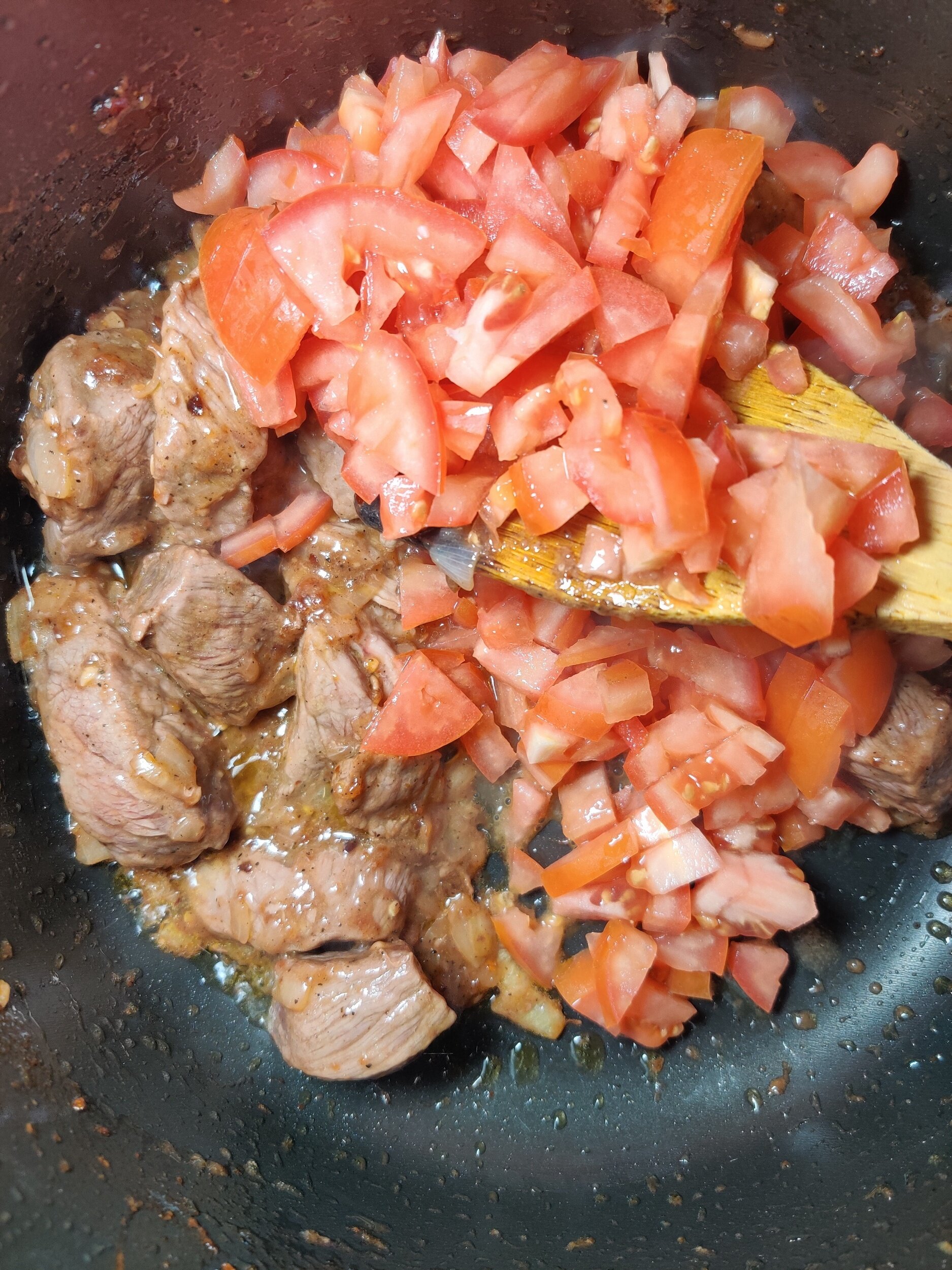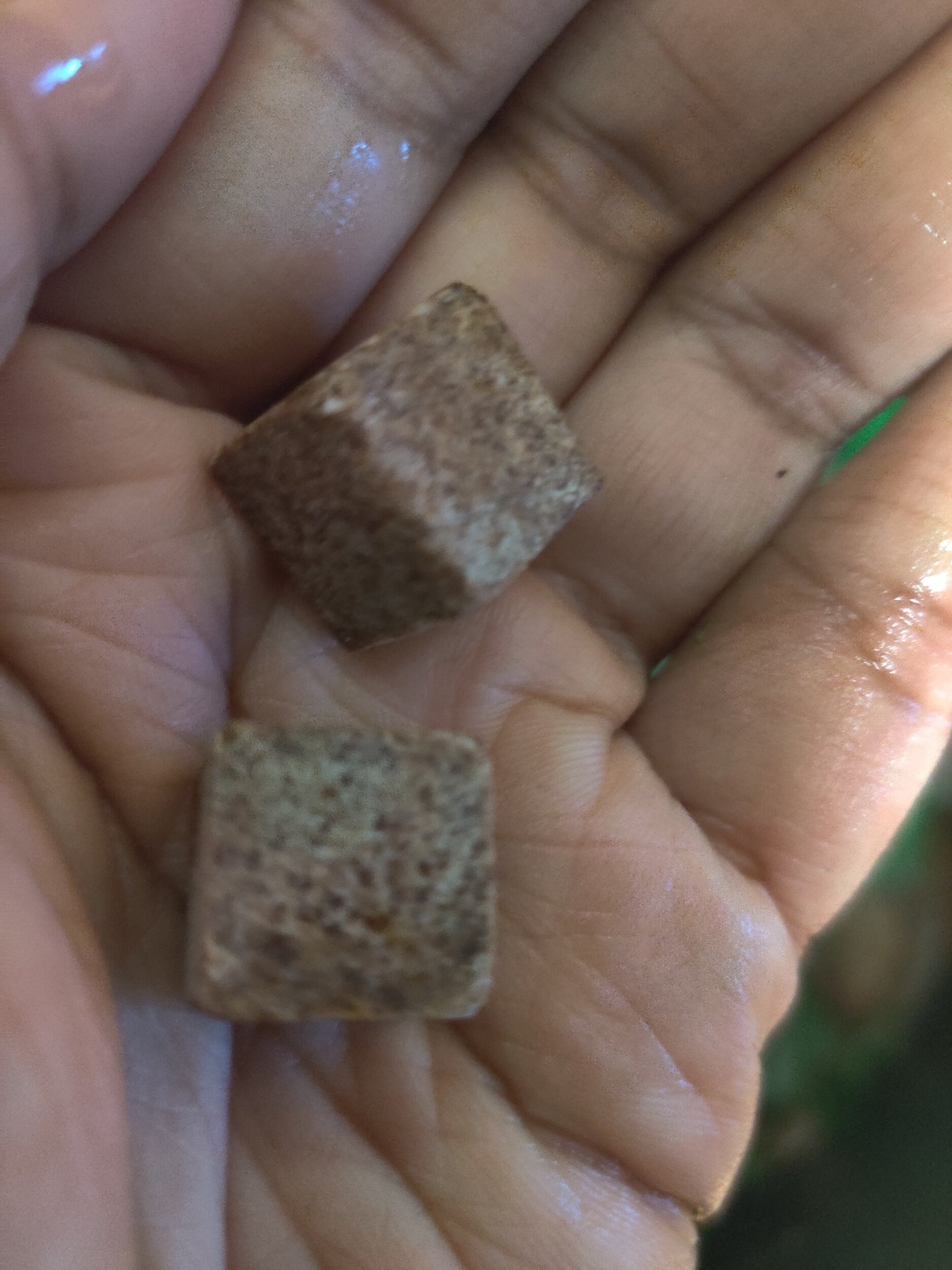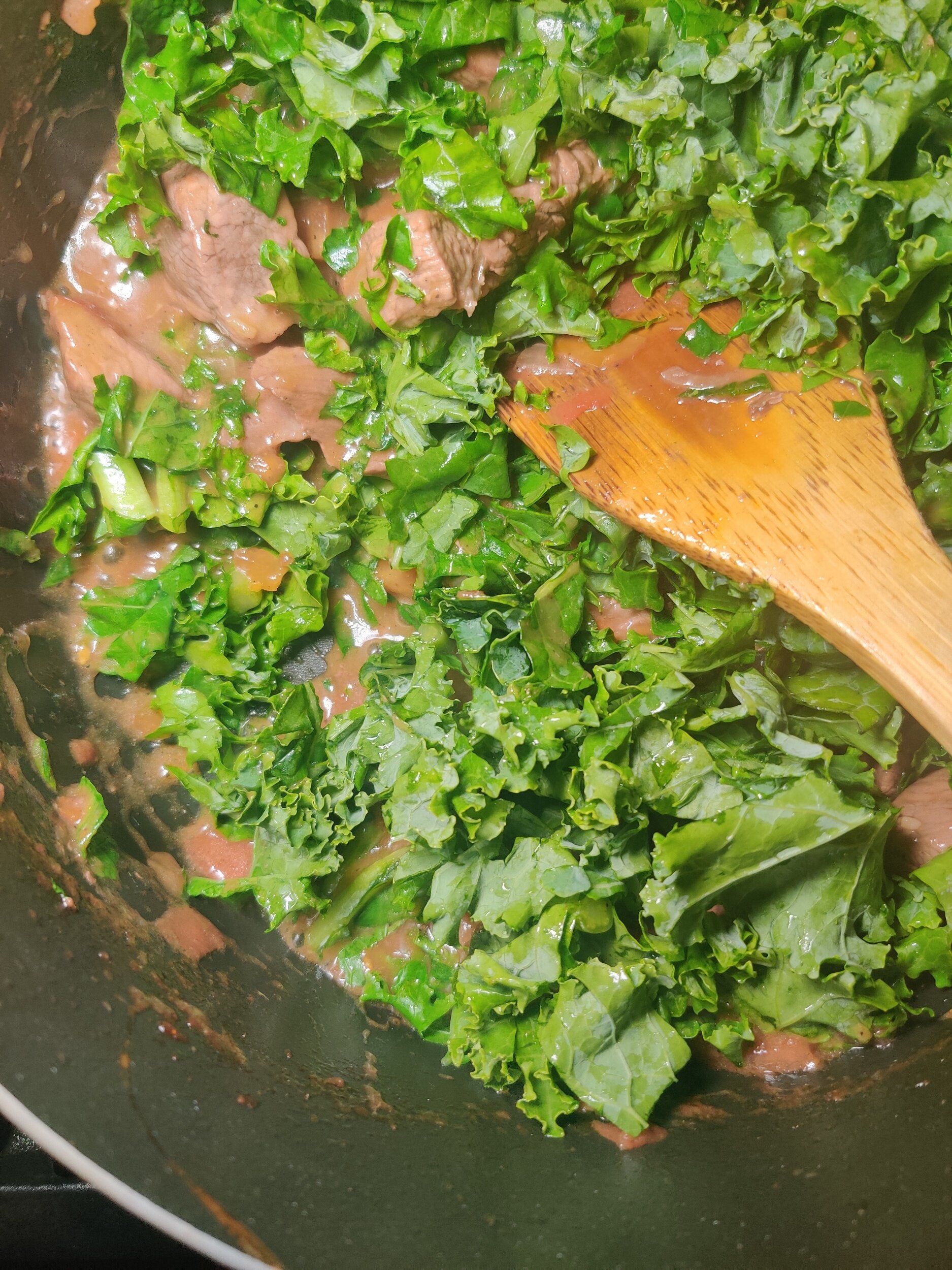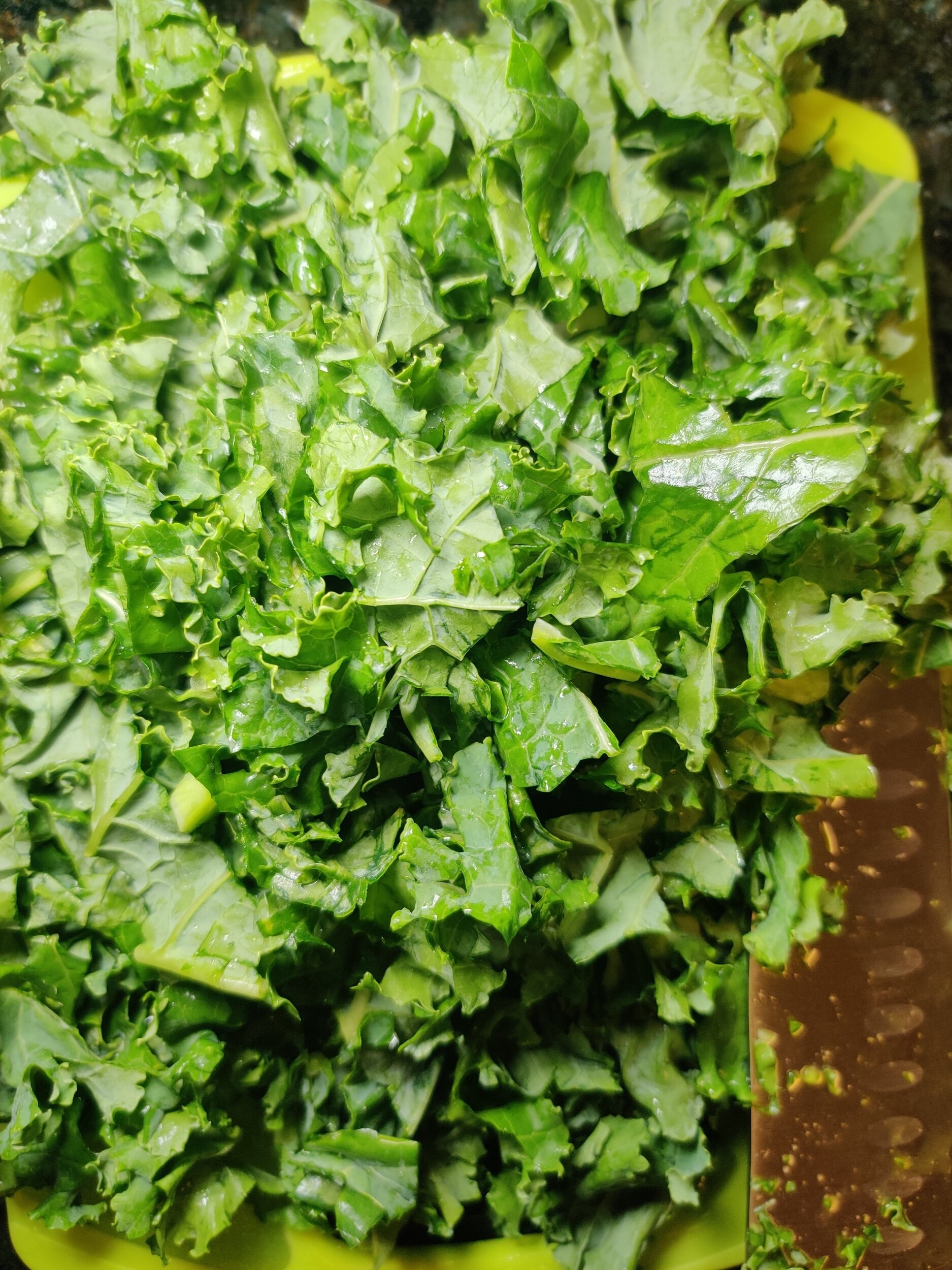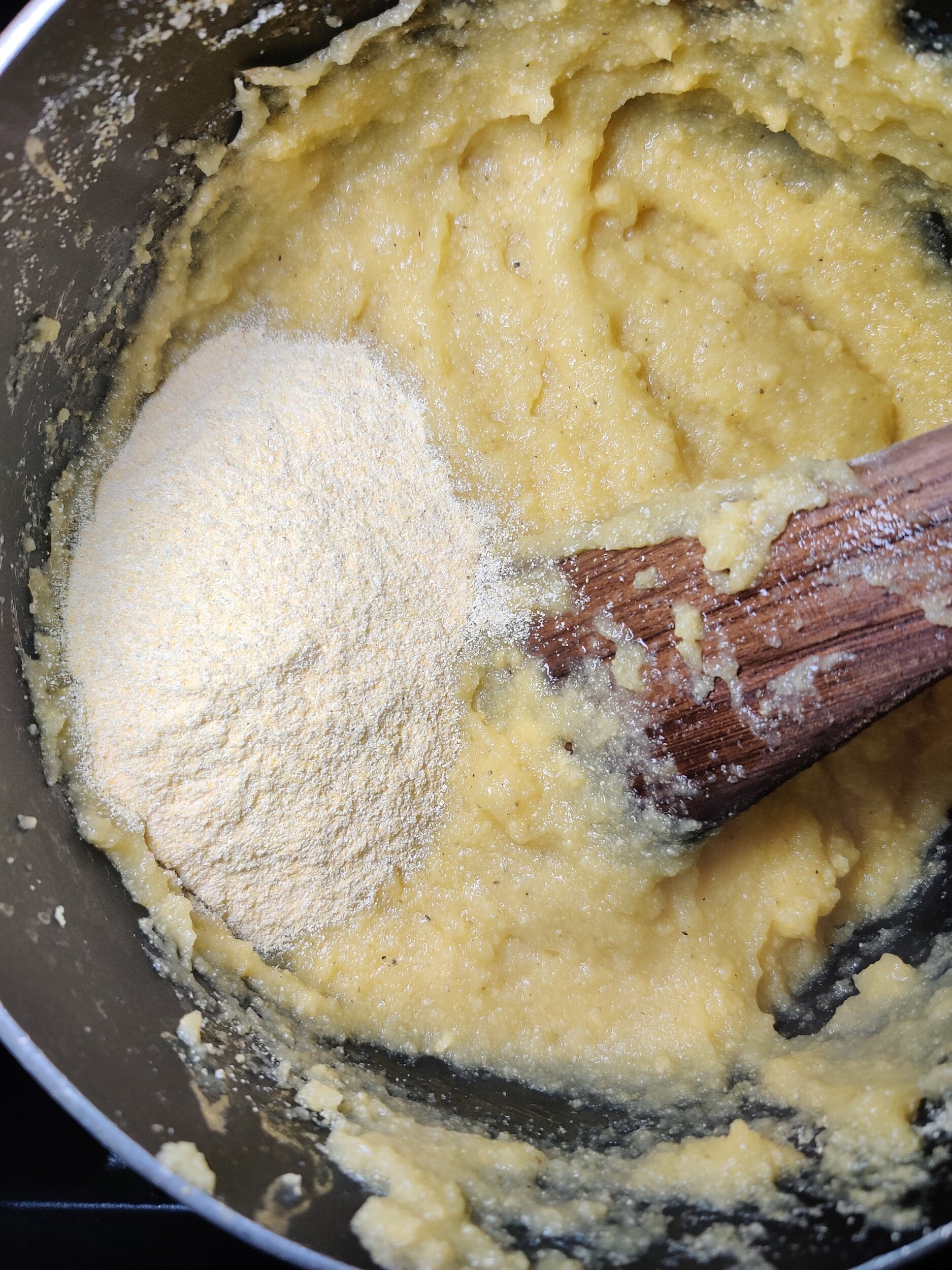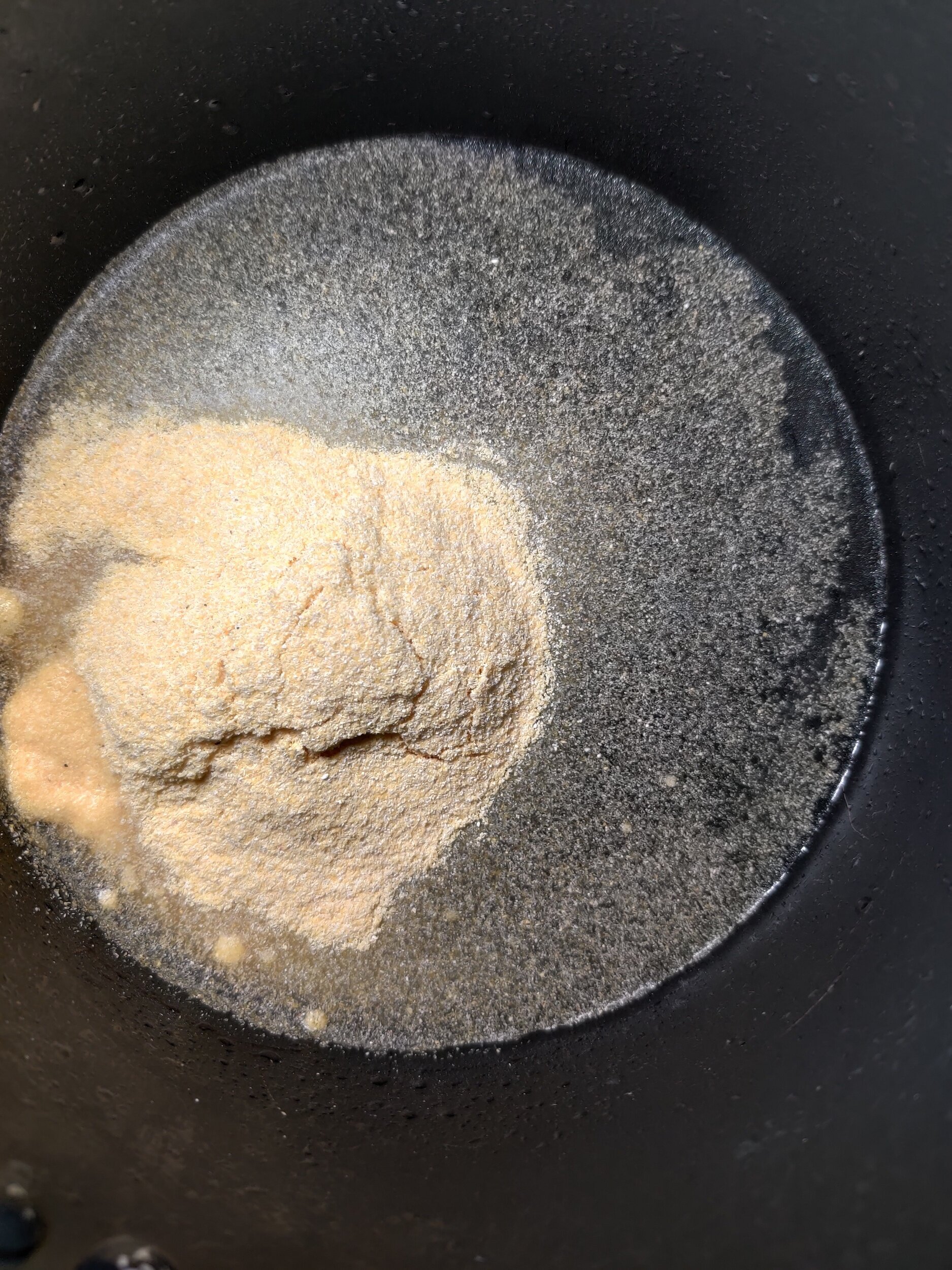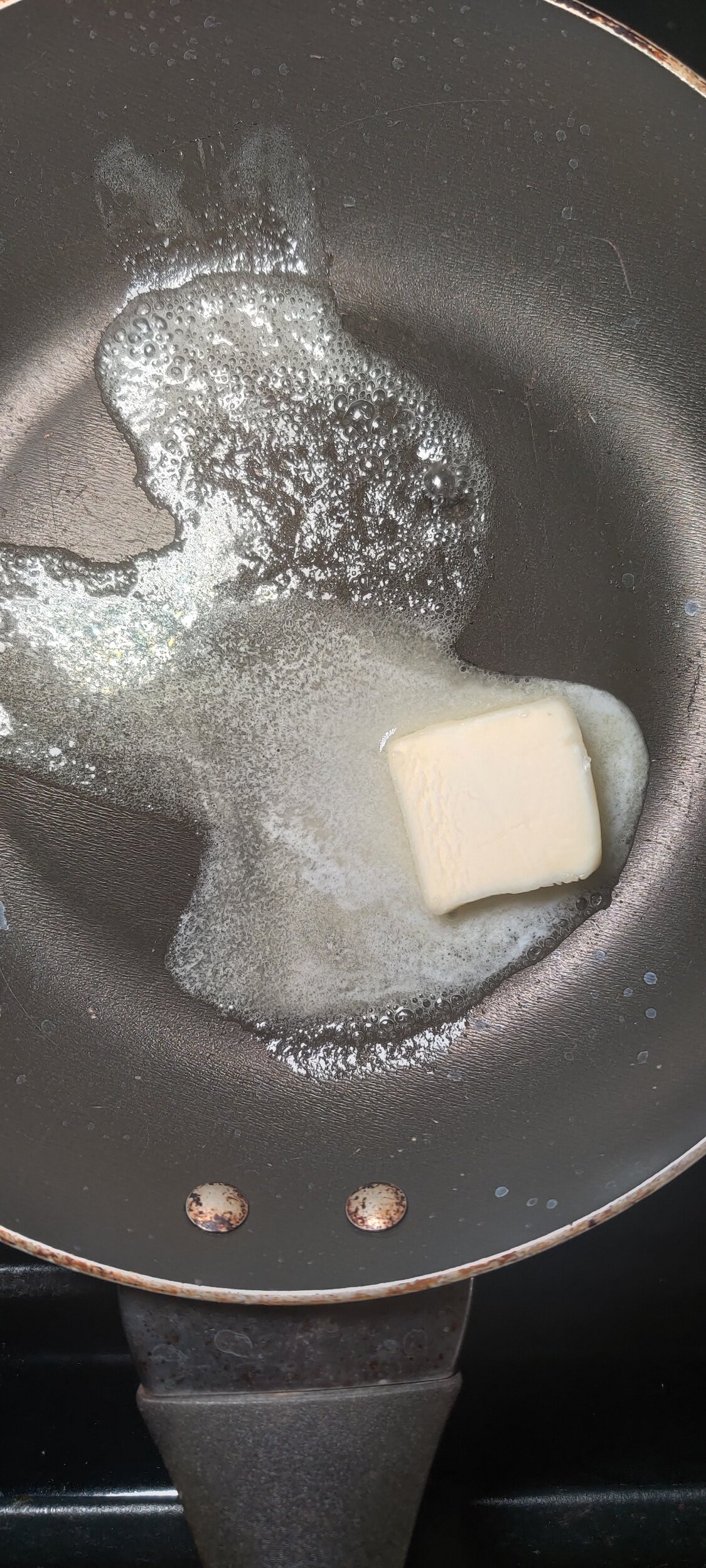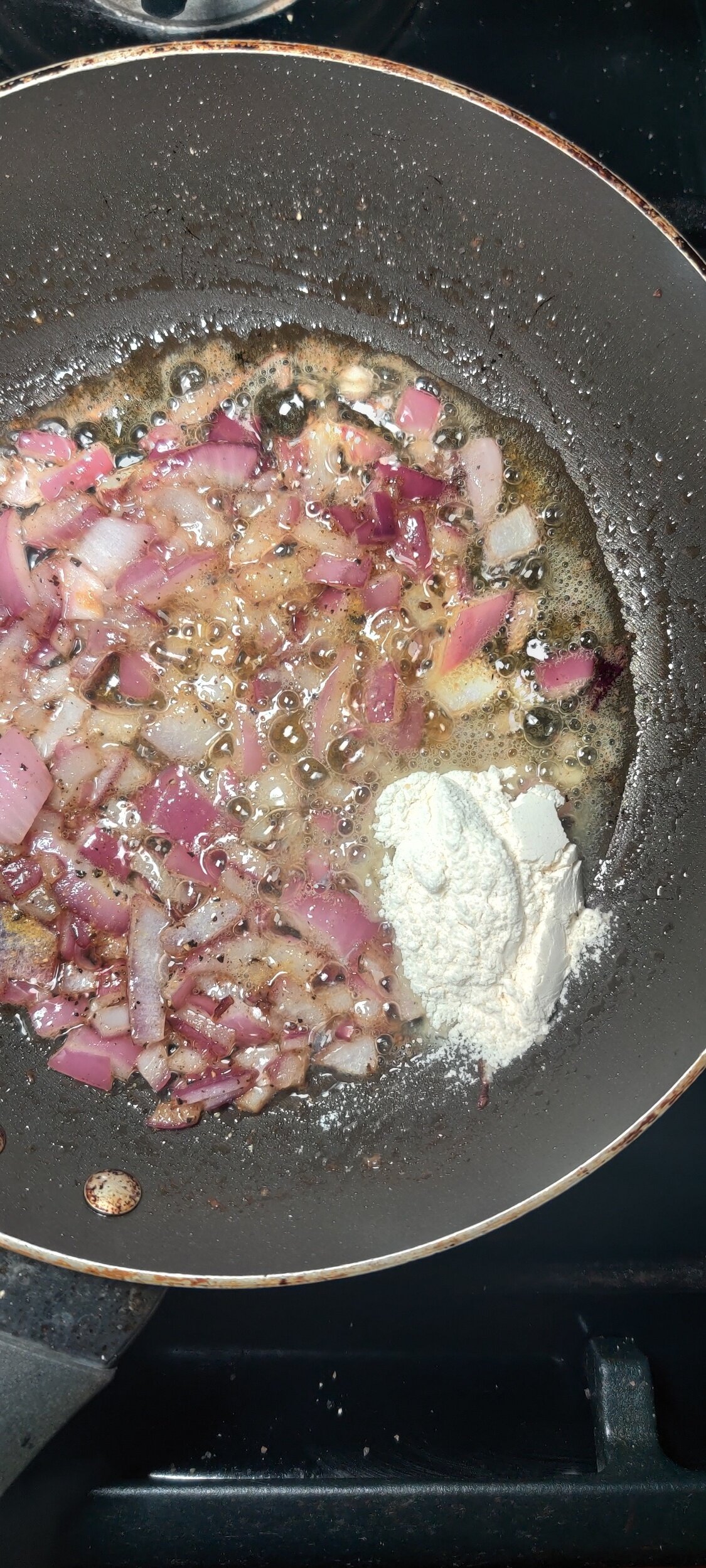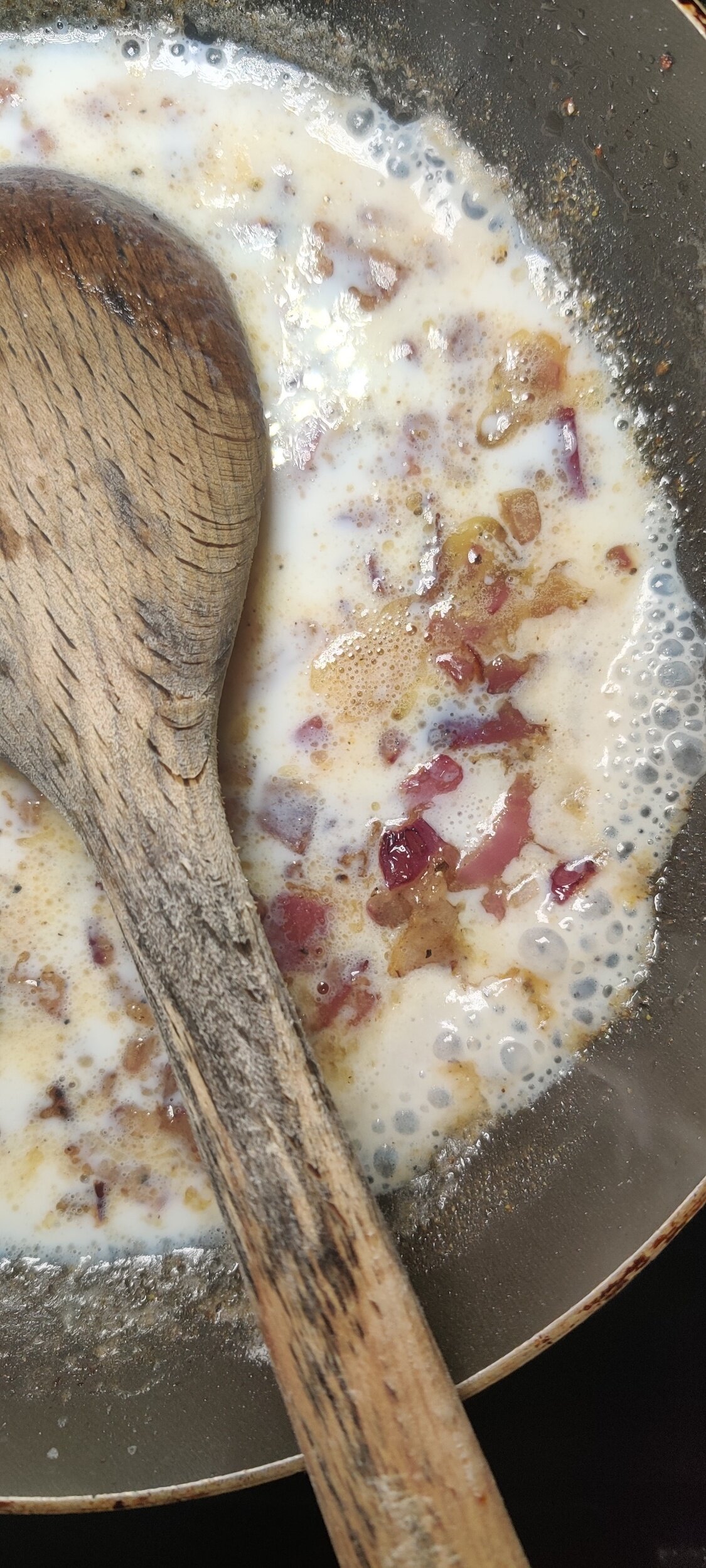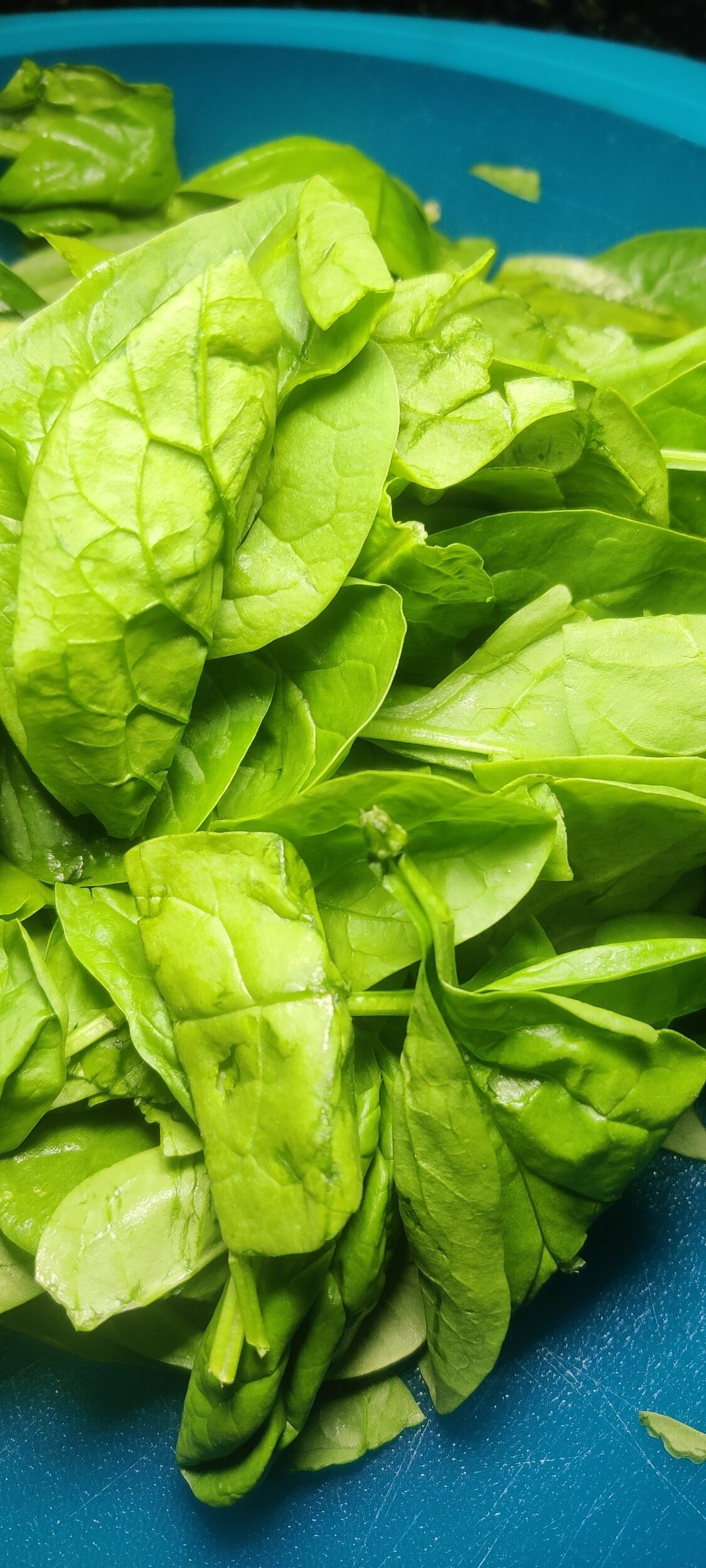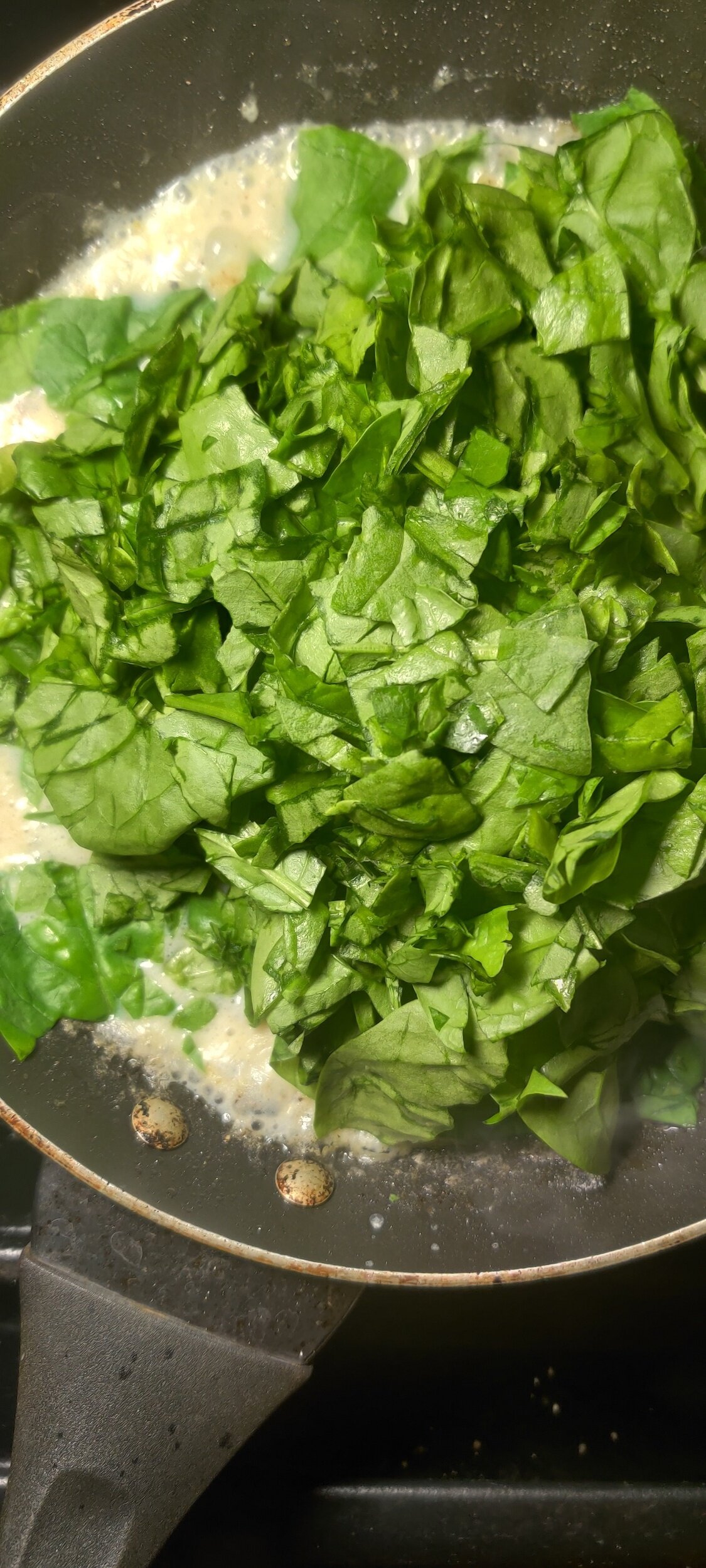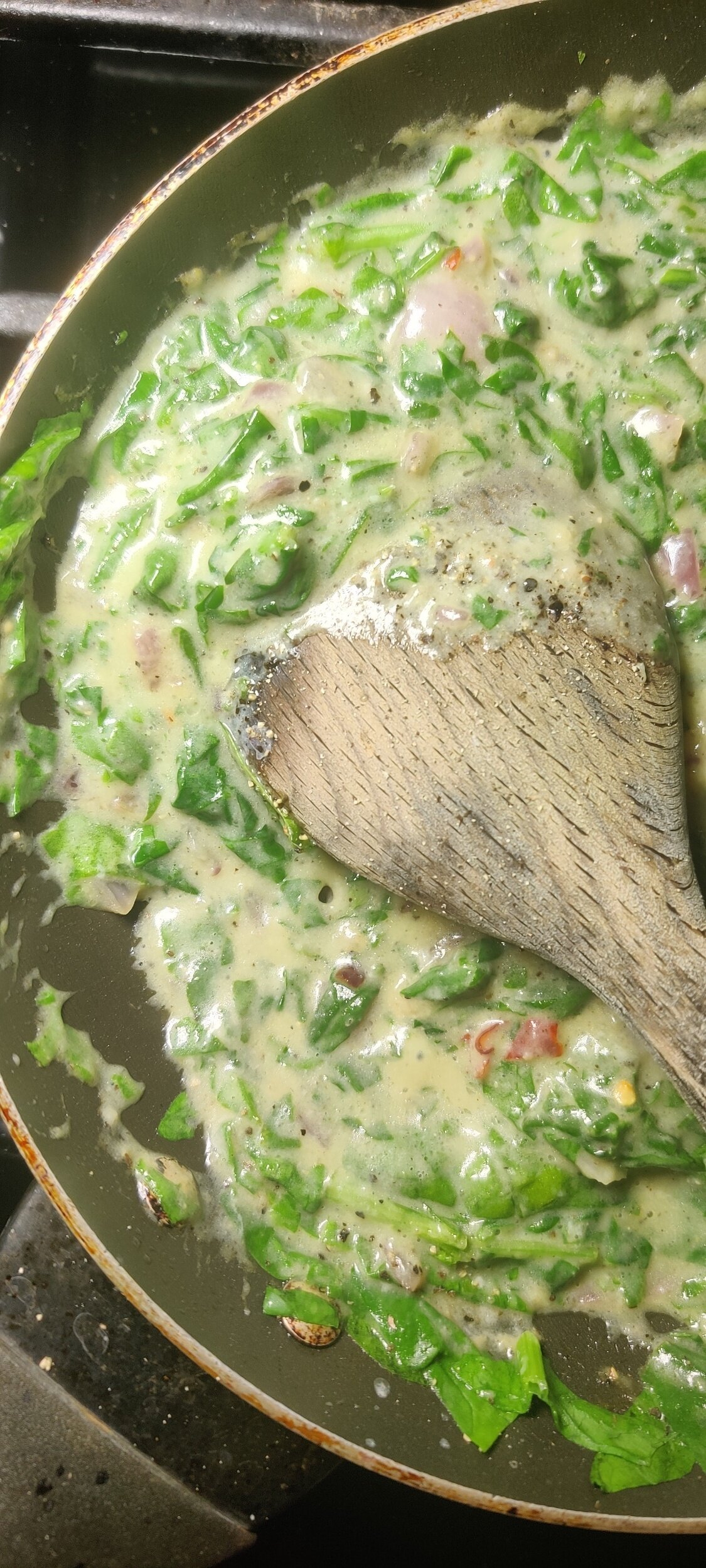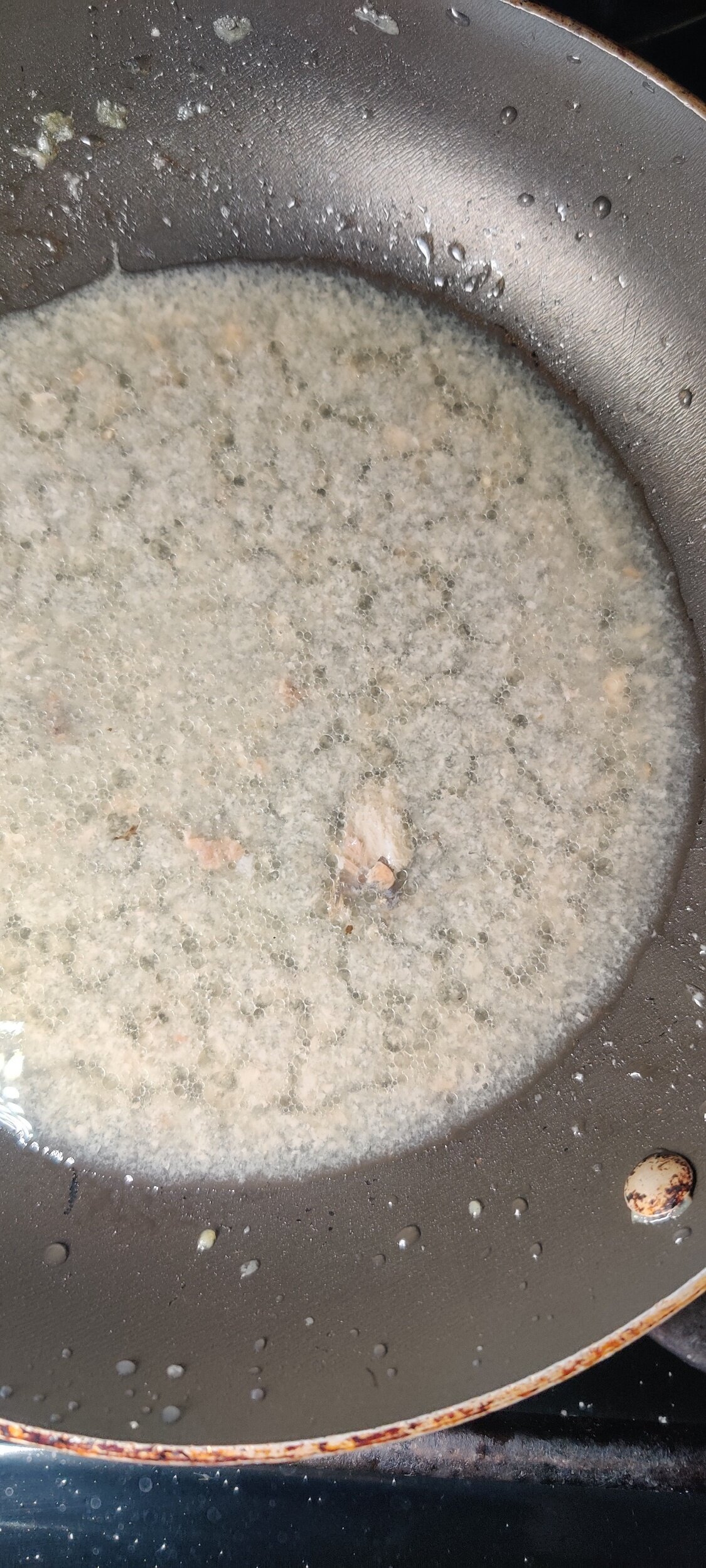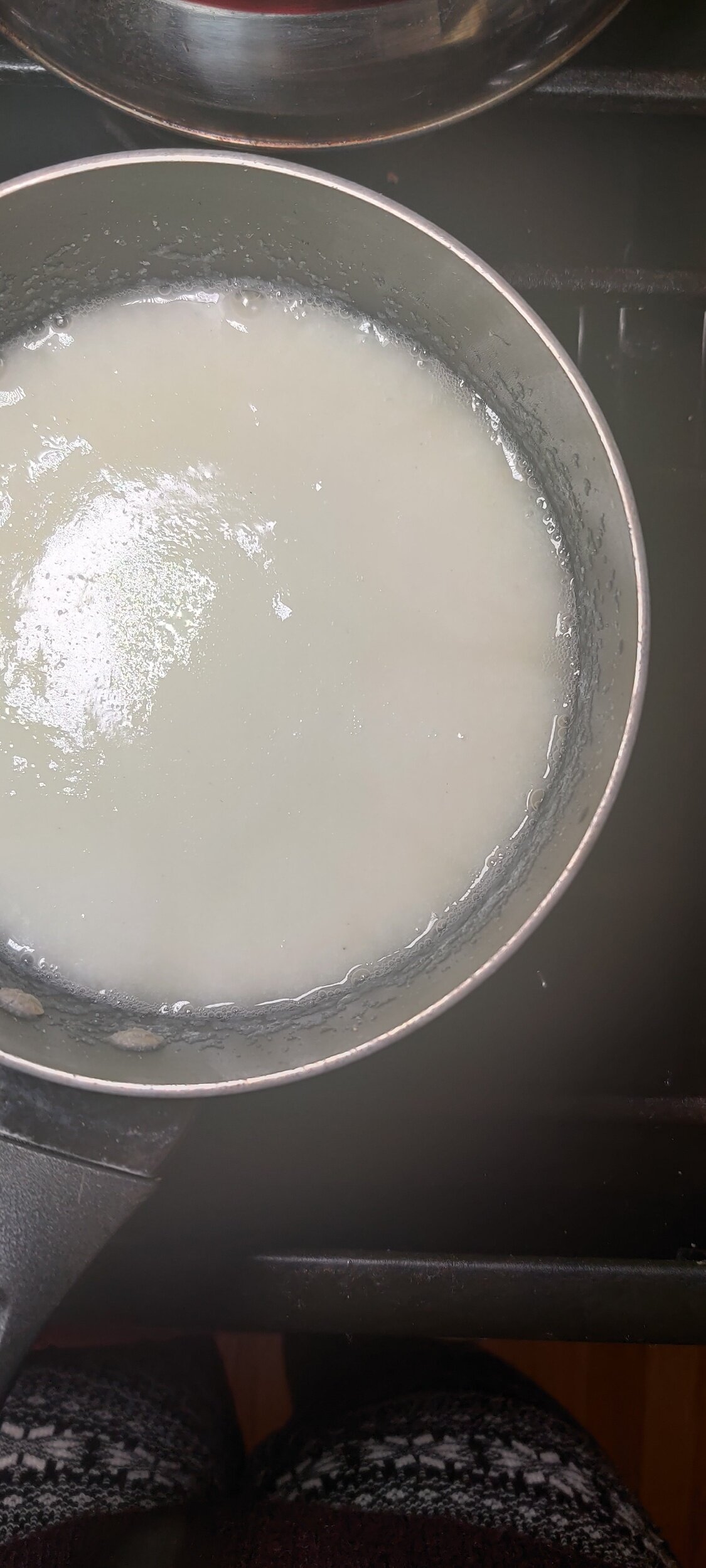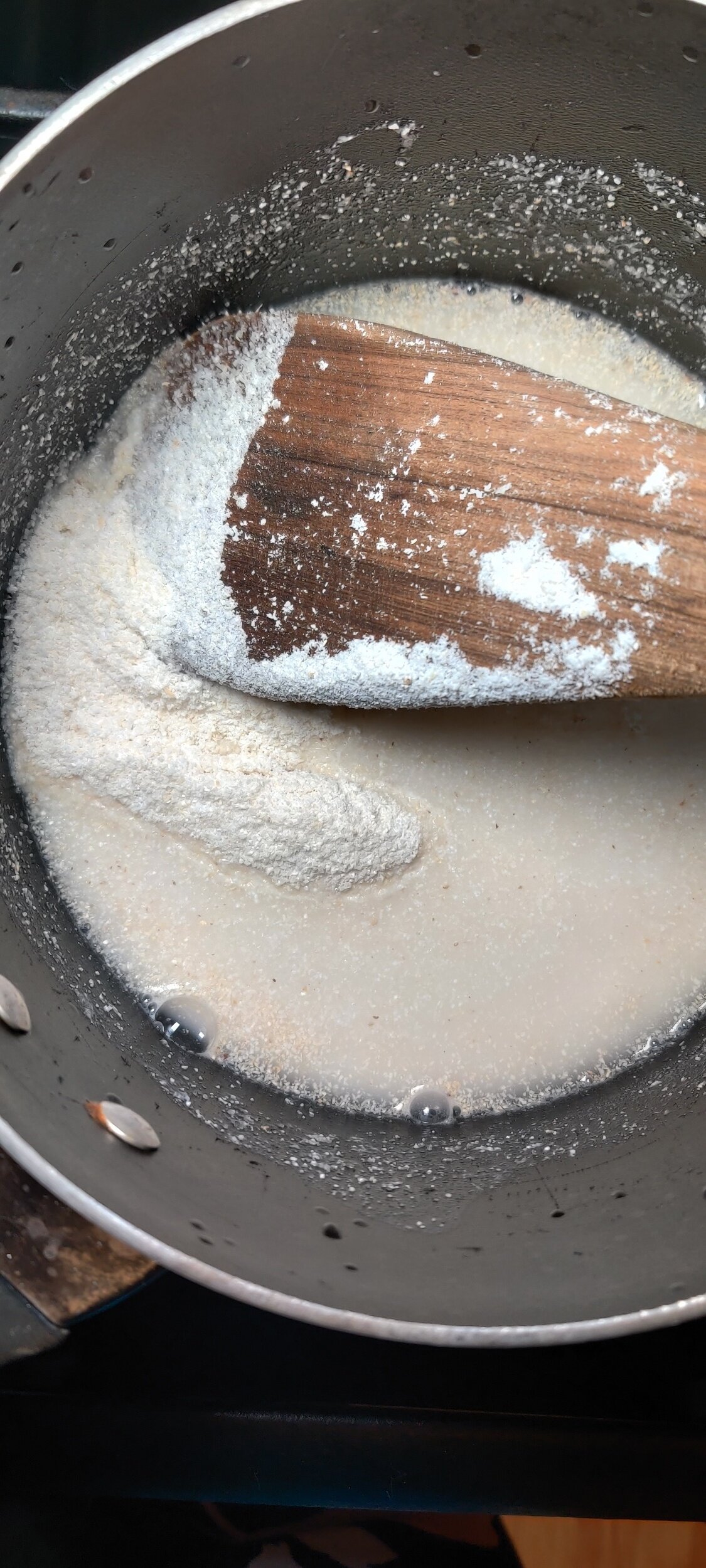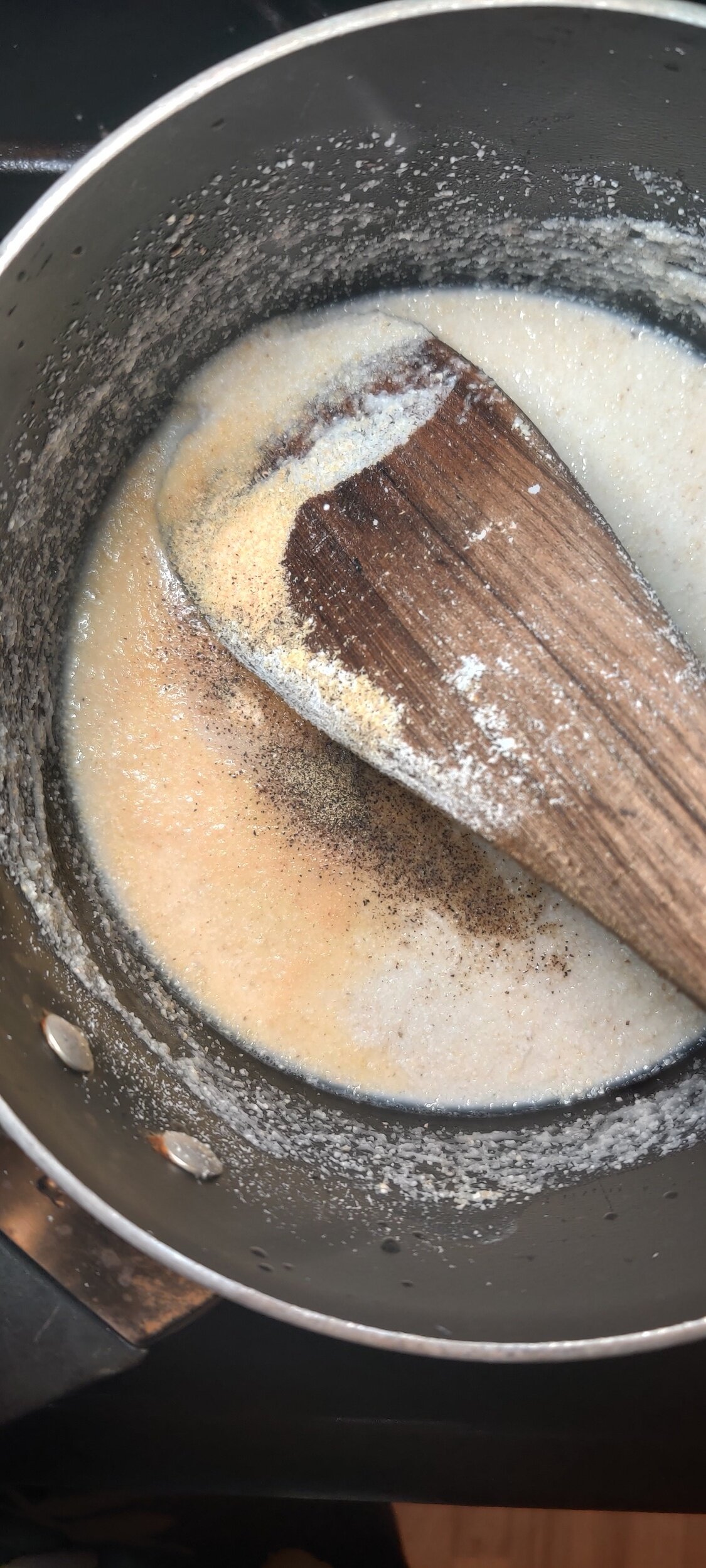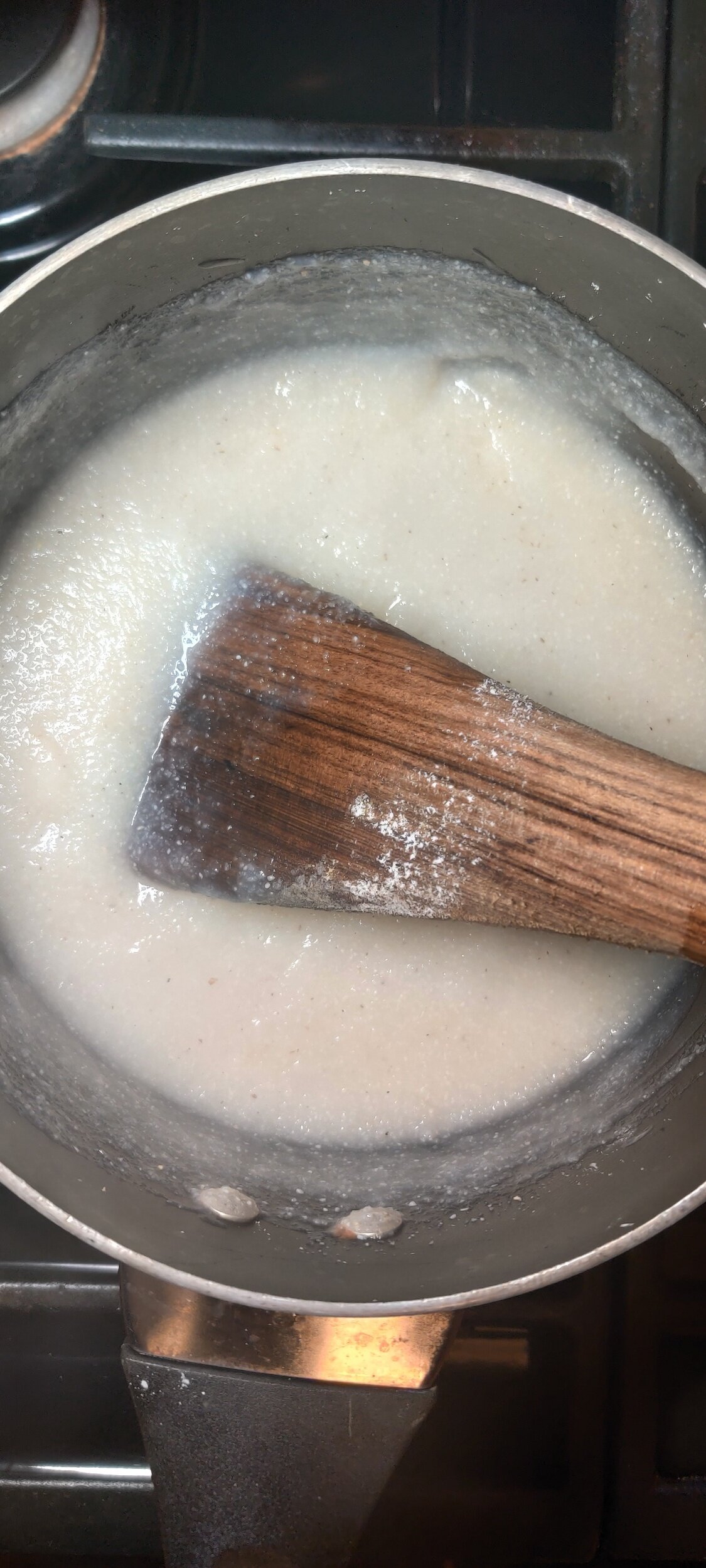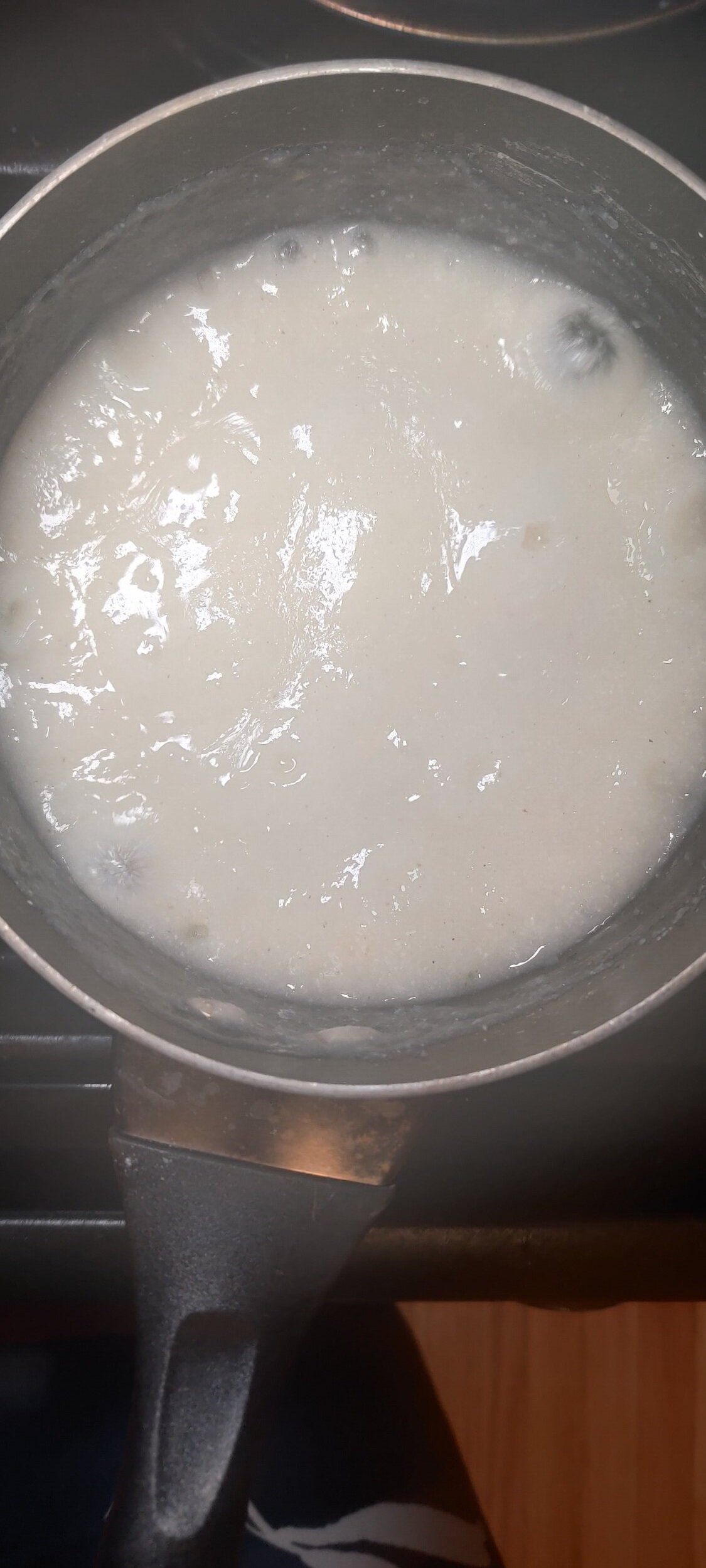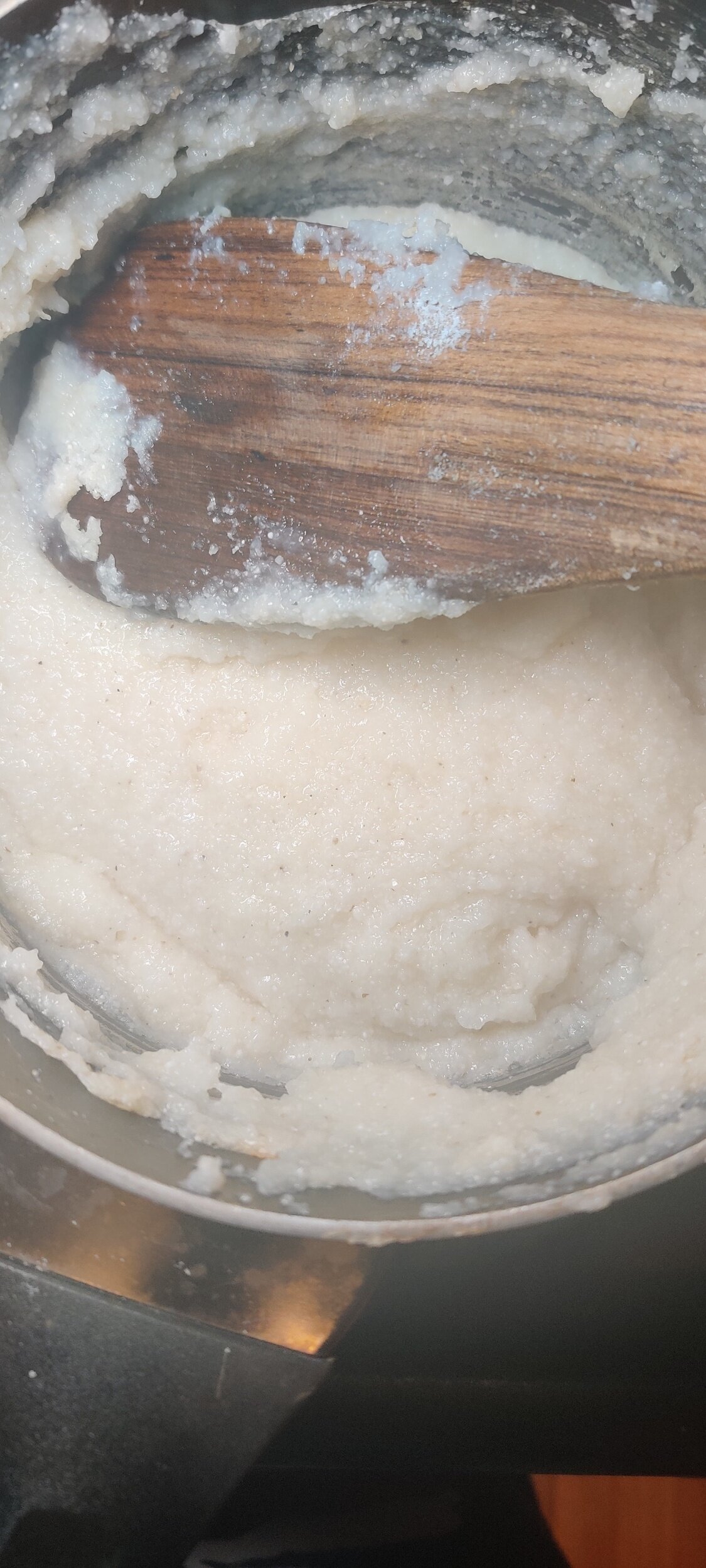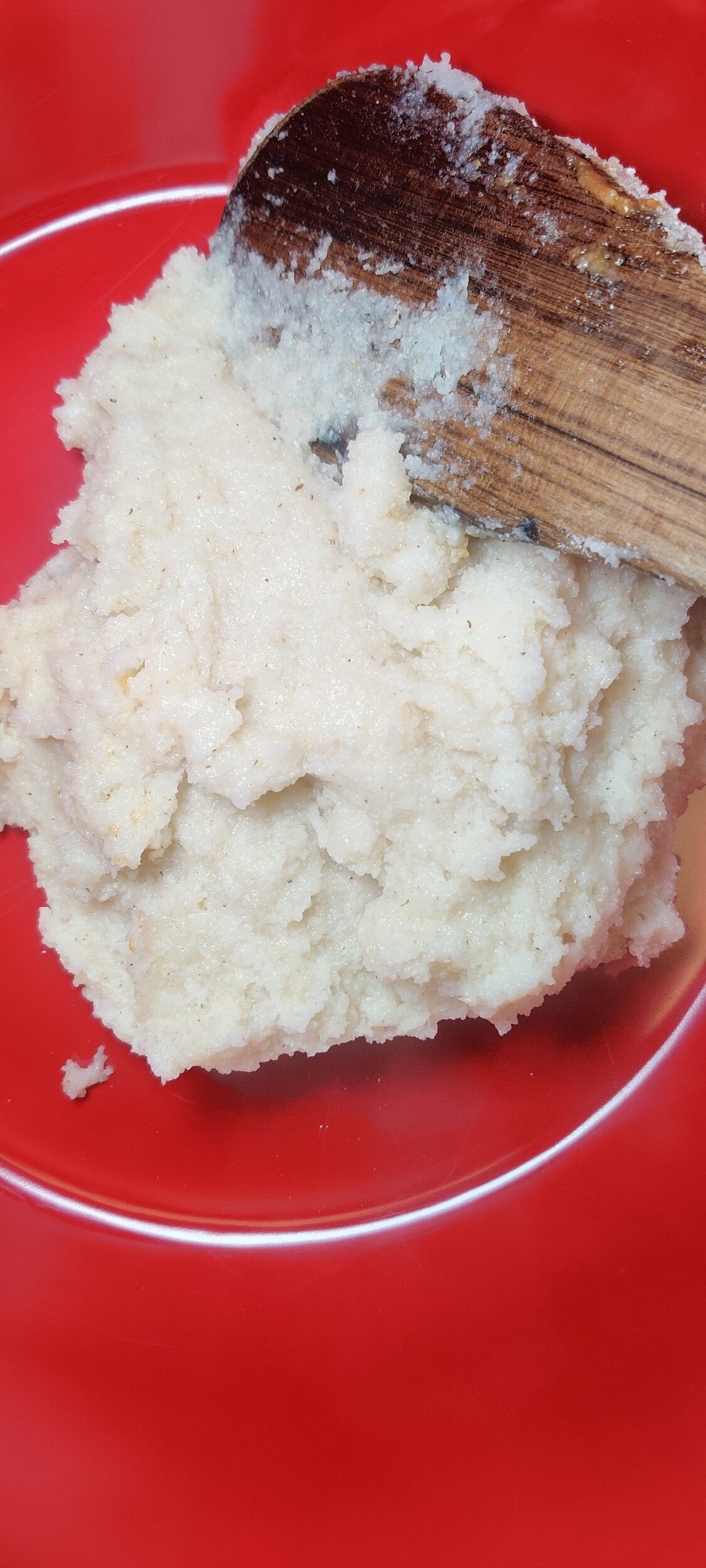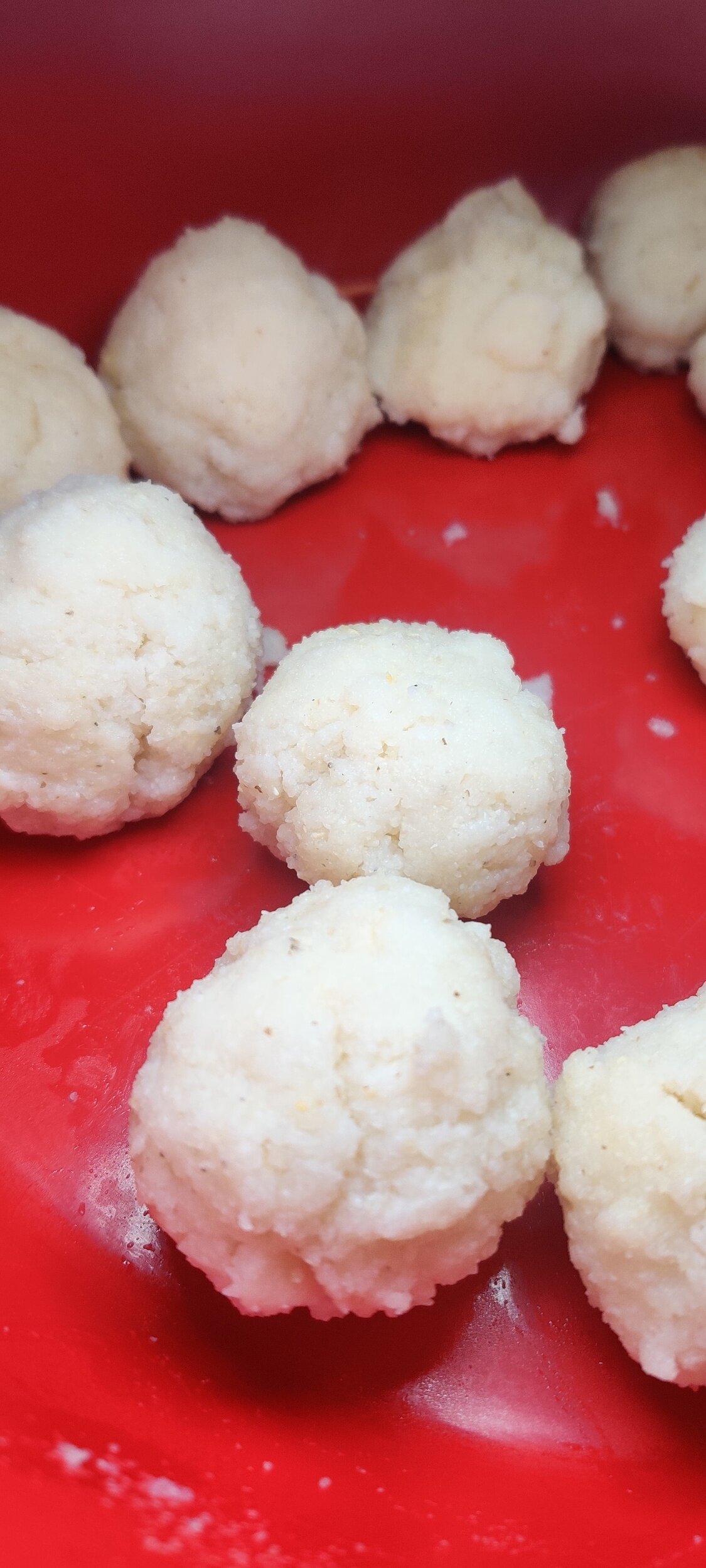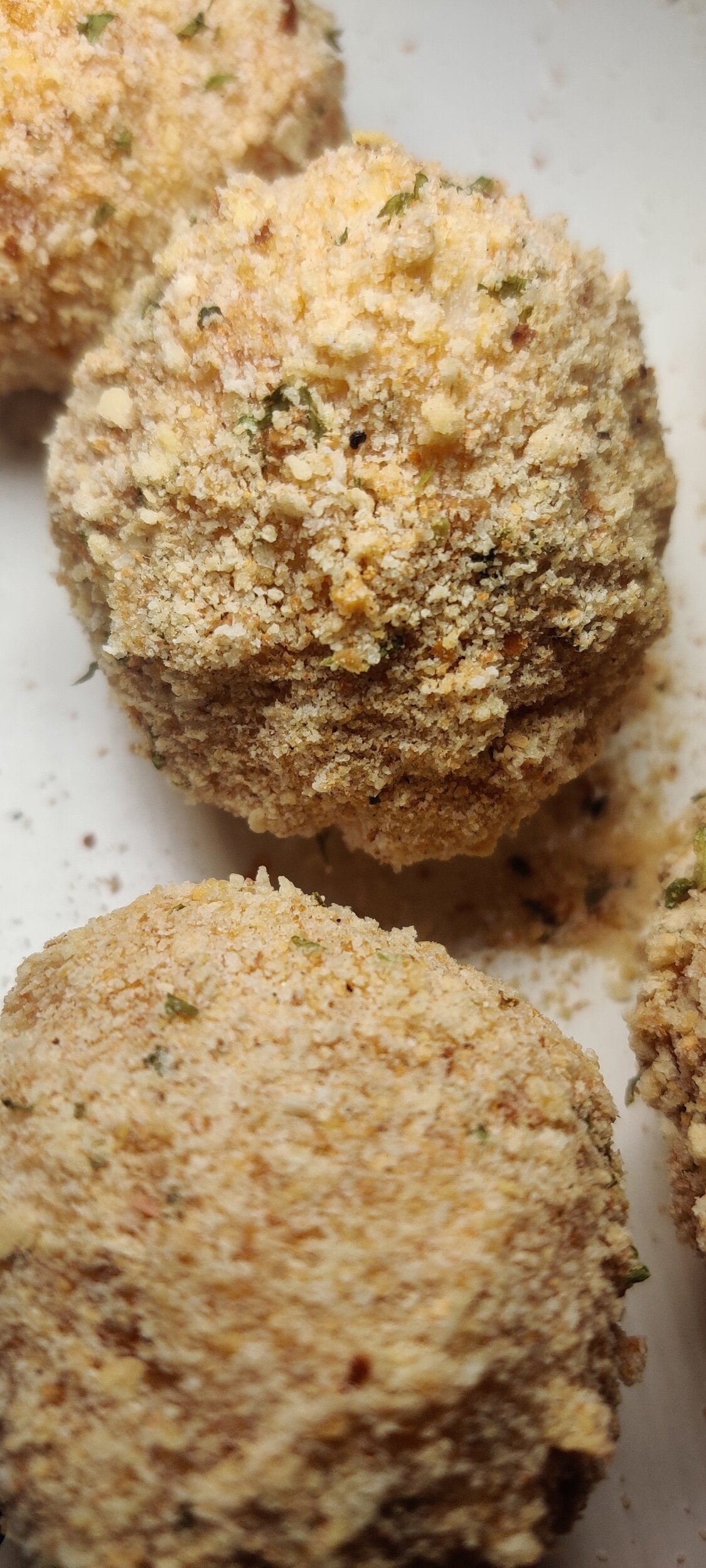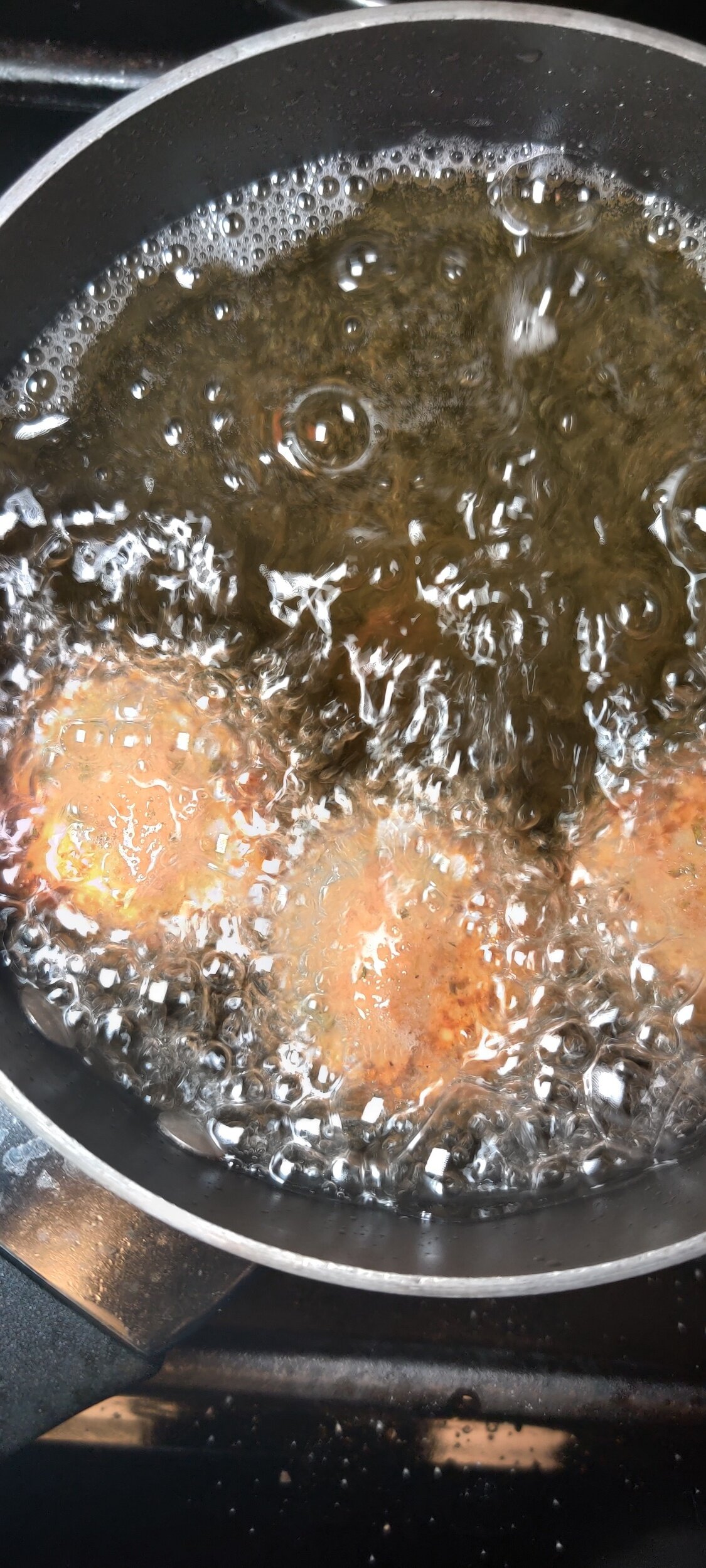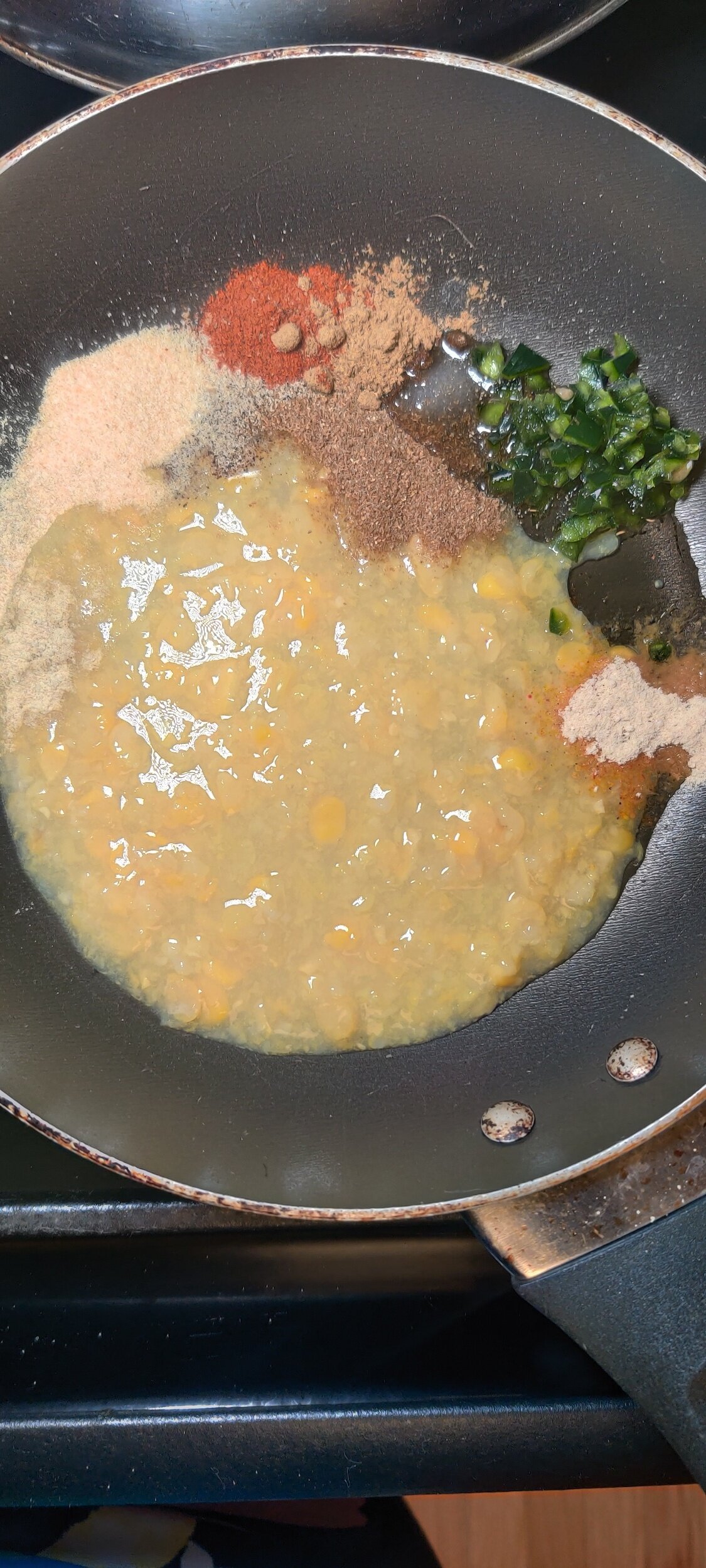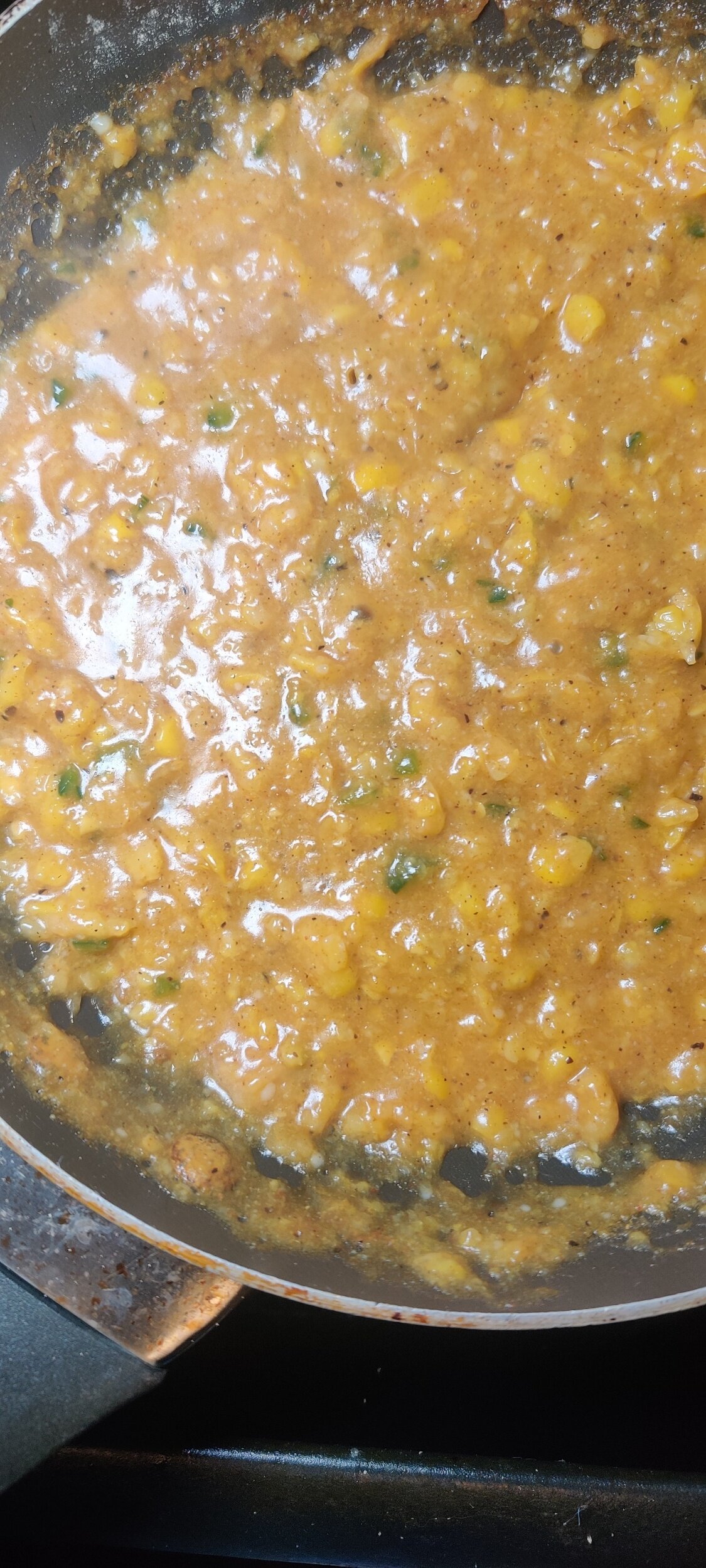Zimbabwean Finger Millet Porridge (Sadza ReZviyo) with Beef Stew
In Zimbabwean cuisine, sadza rezviyo (finger millet porridge) is a beloved staple, cherished for its deep, earthy flavor and rich nutritional benefits. Unlike traditional maize-based sadza, this version is made with finger millet (zviyo), an ancient grain packed with fiber, iron, and a nutty taste that pairs beautifully with hearty stews.
To complete this comforting meal, we’re serving it with nyama (beef stew)—slow-cooked to perfection with aromatic spices, tomatoes, and onions. The result is a wholesome, satisfying dish that embodies the warmth of Zimbabwean home cooking. Whether you’re reconnecting with your roots or exploring African flavors for the first time, this recipe is a must-try!
Zimbabwean beef stew, or nyama, is a comforting and flavorful dish that brings together tender beef, aromatic spices, and rich, savory gravy. Slow-cooked to perfection, this hearty stew features ingredients like tomatoes, onions, garlic, and fragrant herbs, creating a depth of flavor that pairs beautifully with traditional sides. Whether served with sadza rezviyo (finger millet porridge), rice, or dumplings, this dish is a staple in Zimbabwean households, offering warmth and nourishment in every bite. Perfect for family meals or special gatherings, this beef stew is a true celebration of Zimbabwean home cooking.
White Sadza vs. Zviyo (Finger Millet Sadza)
Both white sadza and zviyo (finger millet sadza) are popular staples in Zimbabwean cuisine, but they differ in terms of their base ingredients, texture, nutritional content, and cultural significance.
1.. Base Ingredient
White Sadza: Made from maize (corn) meal, white sadza is the most common form of sadza in Zimbabwe. The maize is ground into a fine powder, which is then cooked into a thick, smooth porridge.
Zviyo (Finger Millet Sadza): Made from finger millet, zviyo is a gluten-free grain that is milled into a finer flour. Finger millet is often used in traditional African dishes due to its rich nutritional profile and slightly nutty flavor.
2. Nutritional Content
White Sadza: While maize sadza provides a good source of carbohydrates, it is lower in nutritional value compared to finger millet. It lacks the higher levels of iron, calcium, and fiber found in finger millet.
Zviyo (Finger Millet Sadza): This is a highly nutritious alternative, packed with iron, calcium, magnesium, and dietary fiber. Finger millet is also considered to be more digestible and easier on the stomach, making it a great choice for individuals looking to boost their nutrient intake.
3. Texture and Flavor
White Sadza: The texture is typically smooth, firm, and dense, with a mild, neutral flavor that easily complements rich stews and vegetables.
Zviyo (Finger Millet Sadza): The texture is often a bit more grainy and hearty than white sadza. Its flavor is slightly **earthy and nutty**, offering a more complex taste that pairs well with savory dishes, especially those rich in spices.
4. Cultural and Regional Significance
White Sadza: As the more commonly consumed form of sadza in Zimbabwe, white sadza is seen as a symbol of comfort and is typically served with a variety of meats, vegetables, and stews.
Zviyo (Finger Millet Sadza): Traditionally consumed in rural areas, finger millet sadza is often considered a healthier option, especially for those with dietary restrictions or seeking to add more nutrients to their diet. In some regions, it’s also regarded as a more traditional meal.
Both types of sadza have their place in Zimbabwean cuisine, and the choice between them largely depends on personal preference and health considerations. Whether you enjoy the smooth comfort of white sadza or the nutrient-packed punch of zviyo, each offers a delicious base for a variety of flavorful dishes!
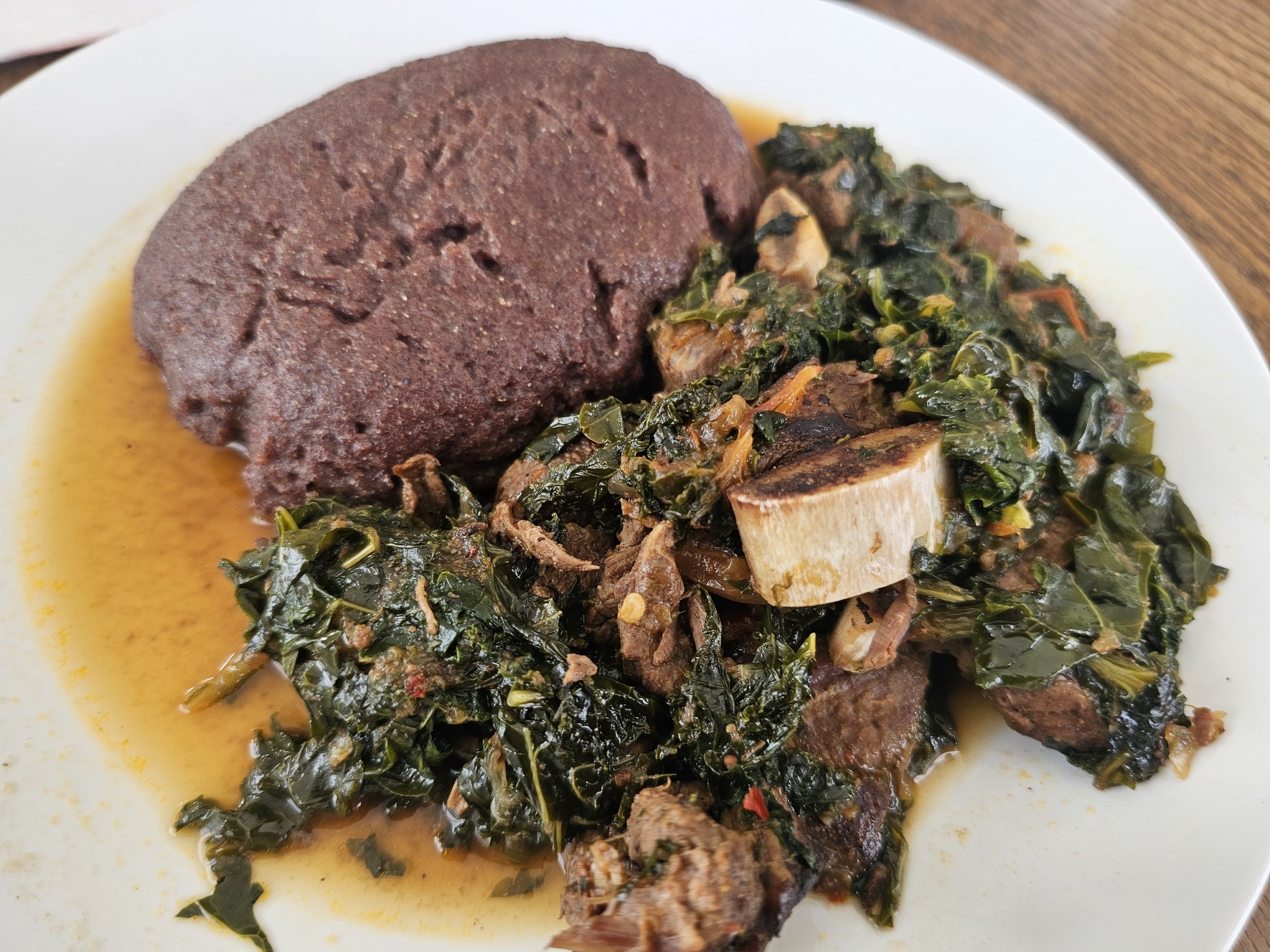
Zimbabwean Finger Millet Porridge (Sadza reZviyo) with Beef Stew
Sadza rezviyo (finger millet porridge) is a Zimbabwean staple with a deep, earthy flavor and rich nutrients. Paired with nyama—a slow-cooked beef stew with aromatic spices, tomatoes, and tender short ribs—this dish is comforting and flavorful. Simmered with herbs, chili, and a touch of red wine, the stew’s bold flavors perfectly complement the wholesome, nutty taste of sadza rezviyo. A must-try for those reconnecting with their roots or exploring African cuisine!
Ingredients
- 1 ½ lbs beef stew cubes
- 1 ½ lbs chuck short ribs
- 4 beef bouillon cubes
- 3–4 cups water
- 1/8 cup Worcestershire sauce
- 1/8 cup red wine or cooking wine
- 1 bunch kale, chopped
- 1 ½ yellow onions, diced
- 2 tomatoes, chopped
- 1 chili pepper, finely chopped
- 3 spring onions, chopped
- 2 garlic cloves, minced
- 2 tablespoons fresh thyme
- 2 tablespoons butter
- 2 tablespoons olive oil (more if needed)
- 1 tablespoon Royco Usavi Mix Beef (optional, all-purpose soup seasoning)
- 1 tablespoon dried oregano
- 1 tablespoon black pepper
- 1 tablespoon seasoning salt
- 1 tablespoon smoked paprika
- 1 tablespoon chilli flakes
- 1- 1 1/2 cups toasted rapoko (finger millet), millet, or sorghum meal (adjust as needed)
- ½ cup cold water
- 1 tsp seasoned salt
- 2 cups hot water (adjust as needed)
Instructions
- Prepare your vegetables by chopping the onions, tomatoes, garlic, and kale, and measure out your ingredients.
- Heat your Dutch oven or large pot, and melt your fats. Add the beef and cook until browned on both sides, then remove and set aside.
- Add the onions and cook for 1–2 minutes until translucent. Follow with the garlic and cook for another minute.
- Add the seasonings and spices, cooking for another 1–2 minutes to activate the flavors. Add a little extra oil if needed. Deglaze the pot by adding your liquids, scraping up the browned bits.
- Add the tomatoes and cook for another 2–3 minutes, then stir in the bouillon cubes.
- Return the beef to the pot, then add water in proportion to the bouillon cubes.
- Bring to a boil, then reduce to a simmer for 1 ½ – 2 hours, or until the meat is tender.
- Season with salt and pepper to taste, then add the kale. Stir and allow it to wilt. You can also add more chili flakes if desired.
- Simmer for 5 minutes, then remove from heat. Turn your attention to the Sadza.
- In a non-stick or steel pot, use a wooden spoon or mugoti to mix the cold water with 1/2 cup of millet until a smooth paste forms. Add your seasoning.
- On medium to medium-high heat, gradually add water in 1/2-cup increments while stirring constantly until the porridge begins to simmer violently, or kwata. As the porridge thickens, switch to a whisk or musika to remove or prevent lumps—smoother porridge results in smoother sadza and a better eating experience!
- Cover the pot with a lid and let the porridge cook for 15–20 minutes on low-medium heat.
- Once the porridge is cooked, gradually add the remaining millet, 1/2 cup at a time, using the whisk or musika to incorporate the dry meal into the dough. Stop when you reach your preferred consistency—thick but not overly dry. For a softer texture, add less millet.
- Once fully combined, switch to the wooden spoon or mugoti. Using a figure-eight motion (kumona), aerate and knead the dough until it becomes smooth, slightly sticky, and clings to the spoon.
- Reduce the heat to low, partially cover the pot, and let it rest for about 5 minutes before serving.
- For an extra step, use cling wrap to shape the sadza into a smooth ball or oval before serving.
I am not a certified nutritionist and any nutritional information on dontmissmyplate.com should only be used as a general guideline.
Huku ne Dovi (Zimbabwean Peanut Chicken Stew)
How to Make Chicken Stew at Home
Zimbabwean Peanut Chicken Stew, also known as huku ne dovi, is a rich and hearty dish that brings together tender chicken, creamy peanut butter, fresh vegetables, hot chilies, and aromatic spices. The result is a perfectly balanced blend of savory and nutty flavors. Whether served over rice, sadza (Zimbabwe’s staple maize porridge), or with warm bread, this traditional dish is a true comfort food favorite.
It might seem like an unusual combination, but across several African cultures, this pairing is wholeheartedly embraced as a bold, comforting meal. In my household, we didn’t have it often, but when we did, it was a glorious treat—especially during the colder months.
A Note on Chilies and Peanut Butter
The key to this dish lies in balancing the heat of the chilies with the creamy sweetness of the peanut butter. You’ll want just enough of both to create a harmonious dance of flavors on your taste buds. That interplay is where the magic of this stew truly shines.
Chicken Texture: Crispy or Tender?
When it comes to the texture of the chicken, there are two camps:
Tender and falling off the bone – Juicy chicken pieces that soak up the stew’s flavors.
Crispy and intact – For those who prefer firmer, browned pieces of chicken.
If you belong to the second group, hold off on adding the chicken back to the pot after browning, or roast the pieces separately and add them just before serving. This way, the chicken stays crispy and retains its texture.
Adjusting the Sauce Consistency
The thickness of the sauce can also be tailored to suit your preference:
Thinner Sauce: Ideal for serving over rice—just shy of soup-like, but light enough to soak into the grains.
Thicker Sauce: Perfect for pairing with sadza or bread, as it clings better to each bite. For a thicker consistency, follow the optional instructions to reduce and thicken the sauce once the flavors have melded together.
Need Some Extra Tips for Your Chicken Stew?
1. Choose the Right Cut of Chicken. Bone-in, skin-on chicken pieces (like thighs, drumsticks, or a whole chicken cut into parts) add rich flavor to the stew. Boneless cuts are also fine but may cook faster and lack the depth of flavor bones provide.
2. Brown the Chicken First. Sear the chicken pieces in hot oil until golden brown before adding them to the stew. This step locks in flavor and adds a delicious depth to the dish.
3. Build Flavor with Aromatics. Use a base of onions, garlic, and fresh or dried herbs like thyme, rosemary, or bay leaves. These aromatics infuse the stew with a rich, savory aroma.
4. Don’t Rush the Cooking Process. A good stew takes time. Simmering the chicken slowly allows the flavors to meld and the meat to become tender. Resist the urge to boil, as this can make the meat tough..
5. Season in Layers. Season the chicken, the broth, and the vegetables as you go. This ensures the flavors are well-balanced throughout the dish. Adjust salt and spices as needed during cooking.
6. Use a Flavorful Liquid. Chicken broth, stock, or even a combination of broth and water enhances the stew's richness. You can also add a splash of wine, coconut milk, or tomato puree for added depth, depending on the recipe.
8. Thicken the Stew to Your Liking. For a thicker consistency, use flour or cornstarch as a thickener. You can also mash a few of the potatoes or add a slurry (a mixture of flour or cornstarch with water).
9. Taste and Adjust Seasoning. Before serving, taste the stew and adjust seasoning with salt, pepper, or a squeeze of lemon juice for brightness.
10. Garnish for Extra Flavor. Add fresh herbs like parsley, cilantro, or dill just before serving for a pop of freshness. You can also top the stew with a dollop of sour cream or a drizzle of olive oil for added richness.
11. Let It Rest. Allow the stew to sit for a few minutes off the heat before serving. This helps the flavors settle and intensify.
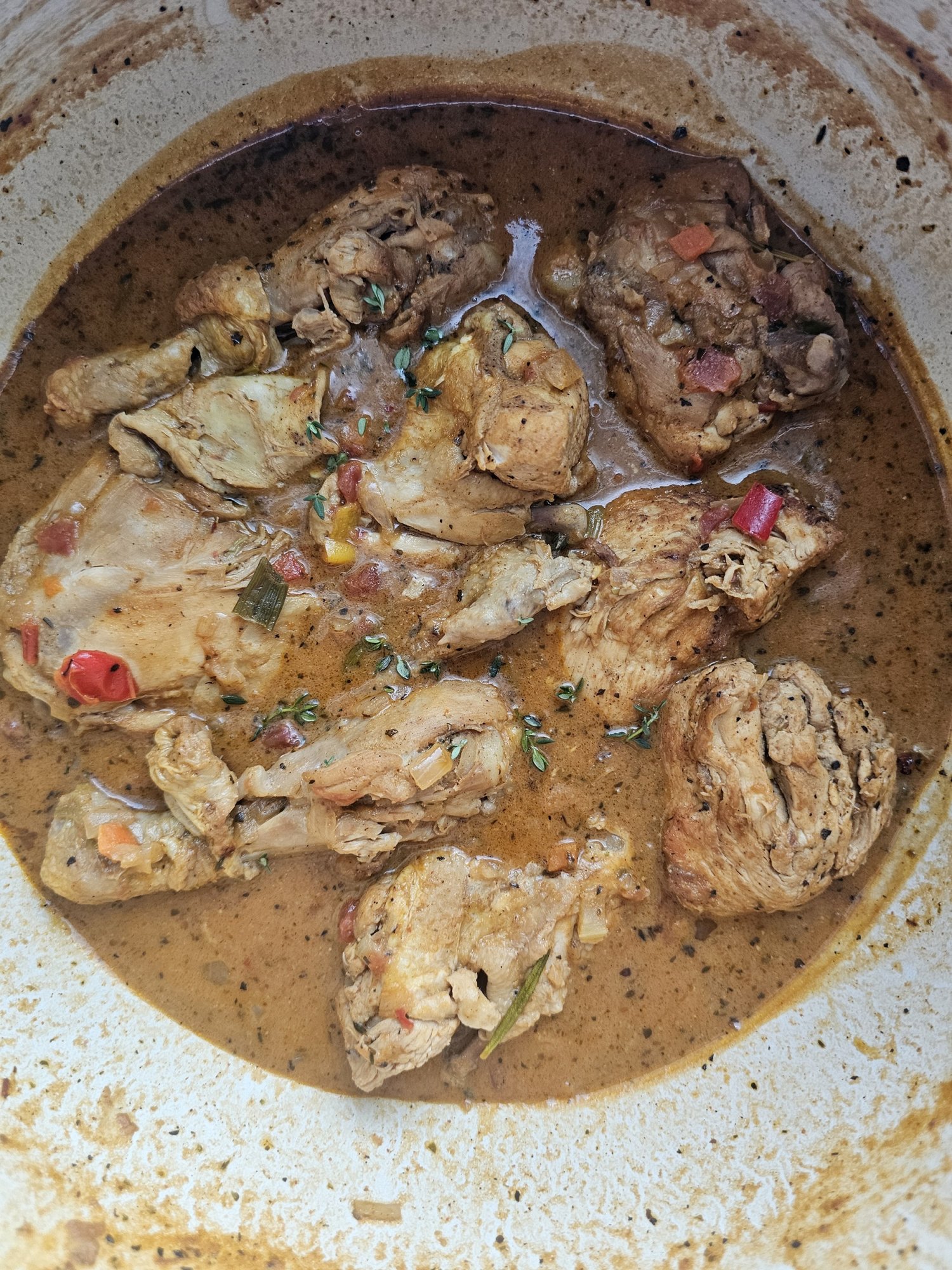
Huku ne Dovi (Spicy Zimbabwean Peanut Chicken Stew)
Zimbabwean Peanut Chicken Stew, or *huku ne dovi*, is a flavorful and comforting dish that combines tender chicken, smooth peanut butter, vibrant vegetables, spicy chilies, and fragrant spices.
Ingredients
- 1/4 cup olive oil
- 1 whole chicken, cleaned and cut into pieces
- 2 tablespoons chicken spice (I used Hind’s)
- 2 green onions
- 1 large hot chilli pepper
- 1/2 large yellow onion
- 1/2 cup mirepoix (chopped onion, carrots and celery)
- 1-2 tablespoons butter
- 1 tablespoon garlic powder
- 1 teaspoon black pepper
- 1 tablespoon paprika
- 1 tablespoon Royco Usavi Mix
- 3 chicken bouillon cubes
- 1/3 cup red wine
- 1 cup diced tomatoes
- 3 sweet bell peppers
- 1/3 cup peanut butter
- 2 tablespoons tomato paste
- 1 teaspoon ginger
- 1 teaspoon cumin
- 1 teaspoon coriander
- 1 teaspoon herb blend (I used basil and thyme)
- 3 cups water
- 3 bay leaves
- 2-3 tablespoons cornstarch or flour (optional)
Instructions
- Season the chicken with all-purpose chicken spice, then brown it in a Dutch oven or non-stick pan over medium to medium-high heat. Once browned, remove the chicken and set it aside.
- In the same pot, add the remaining oil and butter. Stir in the mirepoix, onions, bouillon cubes, garlic powder, black pepper, paprika, and Royco Usavi Mix. Sauté for 2-3 minutes until caramelized. Deglaze the pot with the wine, scraping up any browned bits to incorporate all the flavors.
- Next, add the tomatoes, peppers, chili peppers, cumin, ginger, and coriander. Cook for 1-2 minutes to allow the spices to bloom and the vegetables to soften.
- Return the chicken to the pot and pour in the water. Add more water if you prefer a thinner stew or soup-like consistency. Ensure as much of the chicken as possible is submerged to help it cook evenly. Simmer on low heat for 15-20 minutes.
- In a small bowl, mix the peanut butter with some of the hot stew liquid to thin it out. Stir in the tomato paste, then add the mixture to the pot, ensuring it is evenly distributed.
- Add the bay leaves and continue simmering for another 15-20 minutes.
- Optional: After 5-10 minutes, if you don’t want the chicken to fall off the bone, you can remove it and let the stew continue cooking separately to allow the flavors to come together.
- To thicken the sauce: Remove the chicken, then mix 2 tablespoons of cornstarch or flour with hot liquid from the pot to create a smooth slurry. Stir the slurry back into the pot, mixing well to activate the thickening. Continue cooking until the desired consistency is achieved.
- Season to taste, return the chicken to the pot, and serve hot with yellow rice or your preferred starch.
Nutrition Facts
Calories
438Fat (grams)
20.3 gSat. Fat (grams)
4.8 gCarbs (grams)
62.1 gFiber (grams)
18.5 gProtein (grams)
15.6 gI am not a certified nutritionist and any nutritional information on dontmissmyplate.com should only be used as a general guideline.
Oxtail and Butternut Stew
Oxtail. A delicacy set aside for special occasions (at least for me growing up in Zimbabwe). Whenever I saw my mother preparing the bones for the pressure cooker, I would get so excited. Nothing delighted me more than watching every part, from the chopping of the green onions to the constant check-ups and stirs. I've tried oxtail in various cuisines, from Vietnamese oxtail pho to Jamaican jerk oxtail with white beans. I appreciated both, but this simple version of slow cooking the bones with tomatoes and onions many Zimbabwes tend to go for is ideal, in my opinion!
Southern African potjiekos inspired this recipe. Potjiekos are stews left untouched in cast-iron three-legged pots over hot coals, often a mixture of meat, bones and vegetables. With this method in mind and to add some substance, I used butternut.
Oxtail is something to indulge in once in a while, but it's worth it every time. Check out this recipe if you need instructions for the sadza (traditional Zimbabwean starch made of mealie/cornmeal cooked into a soft, thick porridge), although in this case I used finger millet (zviyo).
Sadza Nenyama (Beef and Kale Stew)
Zimbabwean Sadza with Kale and Beef Stew: A Hearty African Comfort Food
If you're looking to explore authentic African cuisine, Zimbabwean sadza with kale and beef stew is a must-try dish that embodies comfort, tradition, and rich flavors. Sadza, a staple in Zimbabwean households, is a smooth, thick cornmeal porridge similar to fufu or pap, often served alongside flavorful stews. This hearty meal is deeply rooted in Zimbabwean culture and represents the essence of home-cooked comfort food.
In this recipe, tender beef chunks are slow-cooked in a savory, aromatic tomato-based stew, perfectly balanced with nutrient-packed kale. That said, bone-in cuts are more common for this dish, and, in my opinion, provide a more flavorful, rich broth to tie the entire meal together. The combination of rich, meaty flavors and wholesome greens pairs beautifully with sadza, creating a satisfying meal that warms the soul. Whether you have Zimbabwean roots or are simply looking to try something new, this dish is a delicious way to experience the heart of Southern African cuisine.
If there was any meal I got sick of eating as a kid, it was this. As an adult far from home, I found myself with a new-found appreciation, and wanted to share the steps to materialize the meal. While I’ve personally cut down on meat, this classic dish still brings comfort, warmth, and a taste of home, especially on cold or rainy days.
For more recipes inspired by traditional Zimbabwean, cuisine, browse the website or check out Oxtail and Butternut Stew, Fried Sadza with Chilli Creamed Corn, Sadza with Butter Bean Kale Relish, Sadza and Creamed Spinach with Sardines, Huku ne Dovi (Zimbabwean Peanut Chicken Stew), and Black-Eyed Peas with Coconut and Tomato.

Sadza Nenyama (Beef and Kale Stew)
Ingredients
- 1 pound chuck beef or cut ideal for stew
- 1/2 large bunch kale, chopped
- 1 tablespoon butter
- 2 tablespoons vegetable oil
- 1 teaspoon salt
- 1 tablespoon black pepper
- 3 tablespoons Royco Usavi Mix (optional but highly recommended - you can also use a blend of 1 teaspoon cumin, 1 teaspoon coriander, 1/2 teaspoon turmeric, 1/4 teaspoon paprika, 1/4 teaspoon cornstarch, and 1/2 teaspoon fenugreek powder)
- 1 yellow onion, diced
- 3-4 Roma tomatoes, diced
- 1 tablespoon fresh garlic
- 1 tablespoon chili flakes
- 3 beef or vegetable bouillon cubes
- 3 cups water
- 1 1/2 - 2 cups cornmeal/mealie meal (I used yellow cornmeal)
- 1 teaspoon salt
- 3 cups boiling water
- 3/4 cup cold water
- 1 teaspoon garlic powder
Instructions
- Prepare your stew. In a large pot, add the butter and vegetable oil. Sauté the onion and garlic until the onion becomes translucent and the garlic fragrant, about 3-4 minutes. Add the salt, pepper, and spice blend, cook for another 2-3 minutes.
- Add the beef chunks and chilli flakes, brown the meat by cooking for about 5-7 minutes. Add the diced tomato and bouillon cubes, mix to incorporate.
- Add the chopped kale, followed by water (or liquid broth if you're using that). Reduce the heat and simmer for 30 minutes with the lid on top, stirring occasionally and seasoning to taste. You want your beef tender and cooked through, but not tough - so don't overcook.
- While the stew is cooking, make you sadza. Boil the water.
- In a medium-sized pot, stir 1/2 cup of the cornmeal with the cold water to make a paste (not too thick, not too thin).
- Season, then while stirring, add the boiling water - careful not to splash yourself! The heat should be on medium as your stir. After about 4-5 minutes, the cornmeal will begin to bubble. You can close the pot with the lid, and allow it to cook for about 15-20 minutes. Don't burn the bottom of your pot - you may need to reduce the heat to medium-low depending on your stove!
- Bring down the heat to low, and add the remaining cornmeal a 1/2 cup at a time, folding it in to make a soft dough - the softer you want the sadza the less cornmeal, for a thicker consistency use more . Place the lid back on the pot, leaving a slight opening, allowing the sadza to rest over the heat for about five minutes.
- Remove from heat and shape with a wooden spoon. Serve hot with the stew.
Notes
- For vegetarian alternative, use butternut or pumpkin cubes instead of beef.
- Sadza tastes better eaten hot, so try to serve immediately, storing until the next day hardens it. Consume the stew within 3-4 days when refrigerated, otherwise, freeze.
I am not a certified nutritionist and any nutritional information on dontmissmyplate.com should only be used as a general guideline.
Tried this recipe? I’d really love to know how it turned out for you. Leave a quick review or comment below — your feedback helps others (and makes my day!).
Sadza and Creamed Spinach with Sardines
Autumn weather brings the need for comfort food, and I look no further than combos from home.Sardines were something eaten frequently in my household growing up. We often had pressed sardine sandwiches for lunch at school. Kapenta, the Tanganyika sardine or the more common Shona name matemba, are freshwater fish commonly eaten in southern Africa. Zimbabweans both in and outside fishing towns alike stew them and serve along with sadza (cornmeal) and greens, or as fried, crispy finger food.
I had the craving and whipped up something I thought would be as close as possible to the real thing. Even though I didn't use kapenta, the smoked sardines played a decent substitute.
Creamy spinach is a nice detour to handle your greens and doesn't have to be super fatty or bland either. I used milk instead of cream, and the flour helped thicken up everything just fine.
I would also recommend against throwing out the sauce the fillets come in. The liquid is richly flavoured, like perfectly seasoned broth. Just add the tomato, soy sauce and chilli flakes for additional depth of flavour.
In general, I wouldn't shy away from tinned fish! Though I have personally cut down on meat, I always say fish will be the last thing to go, and tinned fish is convenient. You can add it to soups, stews, sandwiches, salads, and other dishes; and as the weather gets colder and your grocery runs less, you'll appreciate the occasional tin.
Ingredients
2 cups spinach, roughly chopped
1/2 red onion, diced
2 tablespoons butter
1/2 teaspoon salt
1 tablespoon black pepper
2-4 large smoked sardine fillets (I used Bar Harbor, which is MSC certified/sustainably caught)
1 teaspoon chili flakes
1/3 cup milk
1 teaspoon soy sauce
2 teaspoons flour
1 teaspoon fenugreek powder
1/4 cup tomato, diced
Sadza:
1 1/3 cups white corn/maize meal
3/4 cup cold water
2 1/2 cups boiling water
Pinch of salt
Instructions
In a saucepan, melt the butter and saute the onion for about 3 minutes. Add the salt, pepper, and fenugreek and cook for another 2-3 minutes until the onion starts to brown and soften.
Stir in 1 teaspoon flour then whisk in the milk, make sure the flour dissolves. Add 1/2 teaspoon chilli flakes and simmer for about 1-2 minutes. Add the spinach and simmer the spinach for 5 minutes. Stir frequently until the leaves have wilted and are incorporated with the onion, set aside.
Prepare your sadza. In a pot, make a paste using the cold water and a 1/3 cup of maize meal, add the salt.
Place the pot over high heat and add 1/2 cup of boiling water. With a wooden spoon, stir quickly and get rid of any lumps. You want a smooth porridge to form. If you need to, use a whisk!
Add the rest of the hot water, still stirring to ensure you still have a smooth porridge. At this point, it will start to bubble. Reduce to medium heat and place a lid on top. Careful not to get burnt. Let the sadza cook for about 10 minutes.
Once cooked, fold in the rest of the corn/maize meal. You’ll want to use a twisting motion with your wooden spoon to make sure all the dry mix is incorporated. This is the final step to make it a thick, dough-like consistency. You can add more corn/maize meal depending on the texture you want.
Put the lid back on and sit on low heat to allow the sadza to rest for about 5 minutes. You might hear it 'breathing' or puffing at this point.
Drain the sardine fillets and keep the sauce. In a small saucepan, heat it and add 1 teaspoon flour, 1 teaspoon soy sauce, 1/2 teaspoon chilli flakes, and the tomato. Simmer until a gravy forms.
When ready to serve the sadza, dip your wooden spoon in some cold water to prevent too much sticking. Mould into a round shape and serve immediately with the creamed spinach, sardines, and gravy.
Tip: to smoothen your sadza use cling wrap as you shape it
Fried Sadza with Chilli Creamed Corn
This recipe is the third of six plates I would serve if asked to make a 6-course meal or string of small plates/tapas based on Zimbabwean cuisine. I used ingredients that are commonly eaten or are considered a cornerstone of our cooking, but with a modern twist. The first was sweet potato soup and the second was tomato bruschetta with guava balsamic glaze.
Sadza. A quintessential part of Zimbabwean cuisine. It's merely ground cornmeal cooked into a dough-like consistency, so a lot can be done with it. We don't typically fry it, similar to the way hushpuppies are made. I like to compare it to naan in India and injera in Ethiopia. Sazda is mainly used as a starch to serve with stewed and grilled meats and vegetables, or as a tool to eat with using hands, no cutlery necessary!
I seasoned and cooked the sadza, coat them with breadcrumbs then fried the balls in peanut oil.
These can be delicious as they are, but you'll want a sauce or gravy to serve the fried sadza with. Fast-food chain KFC adapted this into their menu to cater to the Zimbabwean market, which I found interesting when I first learned of it, but you can do it in your own home!
I made a spicy, creamed corn sauce to dip the fried sadza balls into, making for a delightful appetizer. If you're big on texture, add some corn kernels.
Ingredients
1 1/2 cups white mealie/cornmeal
1 tablespoon garlic powder
2 teaspoons salt
2 tablespoons black pepper
2 teaspoons fenugreek powder
1 1/2 tablespoons coriander
1 can creamed corn
1 tablespoon cumin
2 tablespoons tomato sauce
1 tablespoon paprika
1 teaspoon cayenne pepper
1/2 poblano pepper, diced
2 tablespoons Royco Usavi mix (optional)
1 tablespoon minced garlic
1/4 cup finely minced onion
2 cups peanut oil (more if you need it)
1/3 + 1/4 cup cold water
1 1/2 cups boiling water
1 egg, beaten
1/3 cup breadcrumbs
Instructions
Make your sauce. You can reheat it when it comes time to serve with the sadza balls. In a small frying pan, sauté the creamed corn and diced poblano pepper with the minced garlic, tomato sauce, onion, 1 tablespoon black pepper, 1 teaspoon fenugreek, 1 teaspoon salt, 1 tablespoon coriander, cumin, paprika, cayenne, and Royco Usavi on medium-low heat for about 5 minutes. Add 1/4 cup water and simmer for another 5 minutes, set aside. You can adjust the water depending on how thick you want your dipping sauce.
Mix about 1/4 of the cornmeal with the garlic powder, 1 teaspoon salt, 1 tablespoon black pepper, 1 teaspoon fenugreek and 1/3 cup cold water (or enough) to form a paste. Pour the boiling water into a little bit at a time while stirring with a wooden (or whisking) to prevent lumps over medium heat. Take care not to splash yourself! A thick porridge should begin to form.
Over medium-low heat, once the porridge begins to bubble cover with a lid and simmer for about 15 minutes.
Fold in the rest of the cornmeal flour a little bit at a time with a figure 8 motion to thicken the sadza, and ensure not to leave any dry cornmeal in the pot. You can add more or less cornmeal by a slight margin, but you’ll want the sadza to be thick enough to roll into balls later.
Cover with lid again and allow for it to breathe for about 10 minutes - you may hear a puffing sound. Remove from heat and set aside.
Transfer the sadza to a large bowl to further cool until you can manage it with your hands, but don't allow it to get stone cold!
Heat the peanut oil on medium-low heat in preparation to fry.
Roll the sadza into balls, then systematically dip into egg and then the breadcrumbs.
Fry the sadza balls 3-4 at a time depending on the size of your pot, rotating to evenly fry on each side until they are golden brown.
Remove and place on paper towels to drain any excess oil.
Serve the fried sadza balls hot immediately with the sauce, makes about 9-12 balls.
Sadza with Butter Bean Kale Relish
Ah yes, I love a meal that tastes like home. Home being Zimbabwe in this case. There's nothing like a plate of hot relish (stewed vegetables) and sadza (thick corn/maize meal porridge). This is considered one of the cornerstones of our cuisine and feeds millions of people across the country. It's kind of like how pasta is to the Italians dare I say!
Perhaps I'm biased, but it's some of the best-tasting comfort food, and not smothered in fat either. I made it vegan although some Zimbabweans would request some grilled or in-bone meat. You can do without it.
The one thing I'd insist you include if possible is the Usavi mix. It's a spice brand you'll find in most households but is essentially just a blend of cornstarch, salt, sugar, turmeric, coriander, garlic, fennel, methee/fenugreek, cumin, and paprika. Some people like to add curry powder to their relish, but I find that changes the flavour profile into something completely different. This is all about simple deliciousness!
Ingredients
1 can butter/Lima beans (keep the sauce)
1 tablespoon garlic, minced
1 tablespoon olive oil
1/2 onion, chopped
1/4 tomato, chopped
2 tablespoons Usavi mix
1/2 teaspoon salt
1 tablespoon chili flakes
1 teaspoon black pepper
1/4 cup water
1 tablespoon butter
2 tablespoons vegetable
3 cups chopped kale
Sadza:
1 cup white corn/maize meal
3/4 cup cold water
2 1/2 - 4 cups boiling water (depending on how thick you want your sadza)
1/2 teaspoonsalt
Instructions
Heat the olive oil and butter, saute the garlic and onions for about 3 minutes to sweat them out.
Add the Usavi mix, salt, and pepper, cook for another 2 minutes to bring out the flavours.
Add the chopped kale and cook until wilted down, then add the tomato and vegetable oil and fry for 2 minutes.
Add the beans along with the sauce from the can, chilli flakes, and water. Reduce heat and simmer for about 10 minutes, stirring occasionally. Set aside.
Prepare your sadza. In a pot, make a paste using the cold water and a 1/2 cup of maize meal, add the salt. When you add the cold water, do it gradually to keep control of the consistency of the paste, you don’t want clumps and it should all come together.
Place the pot over medium-high heat and add 1/2 cup of boiling water. With a wooden spoon, stir quickly and get rid of any lumps. You want a smooth porridge to form. If you need to, use a whisk!
Add the rest of the hot water a 1/2 cup at a time, still stirring or whisking to ensure you still develop a smooth porridge. At this point, it will start to bubble or kwata. Reduce to medium-low heat and place a lid on top. Careful not to get burnt. Let the sadza cook for about 10 minutes.
Once cooked, fold in the rest of the corn/maize meal. You’ll want to use a twisting or figure-8 motion with your wooden spoon to make sure all the dry mix is coated and you incorporate air. This is the final step to make it a thick, dough-like consistency. You can add more corn/maize meal depending on the texture and consistency you want.
Put the lid back on and sit on low heat to allow the sadza to rest for about 5 minutes. You might hear it 'breathing' or puffing at this point.
When ready to serve, dip your wooden spoon in some cold water to prevent too much sticking. Mould your sadza into a round shape and serve with your relish, enough for 2 people.
Tip: to smoothen your sadza use cling wrap as you shape it.
Also, eat with your (washed) hands! It tastes better.















